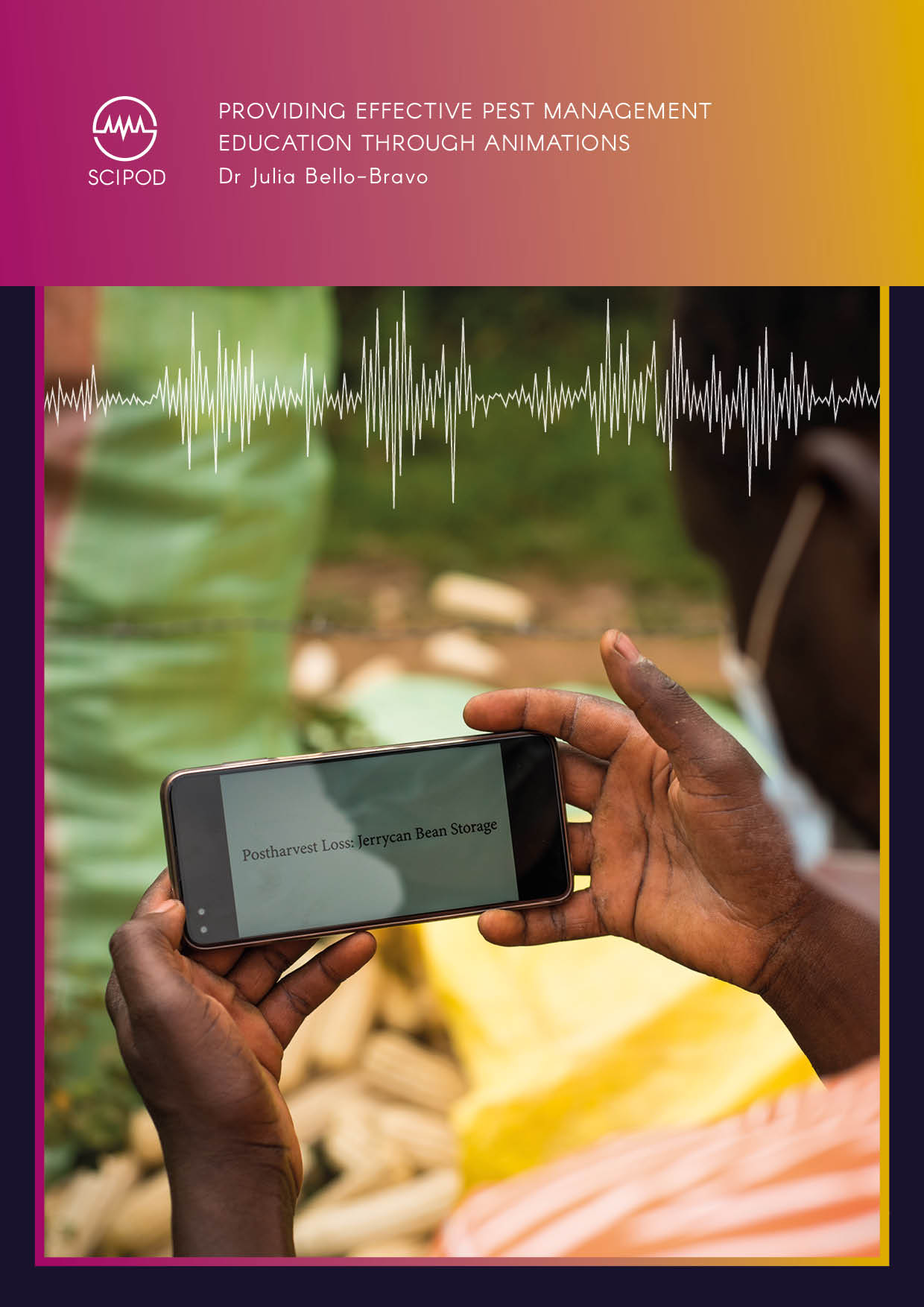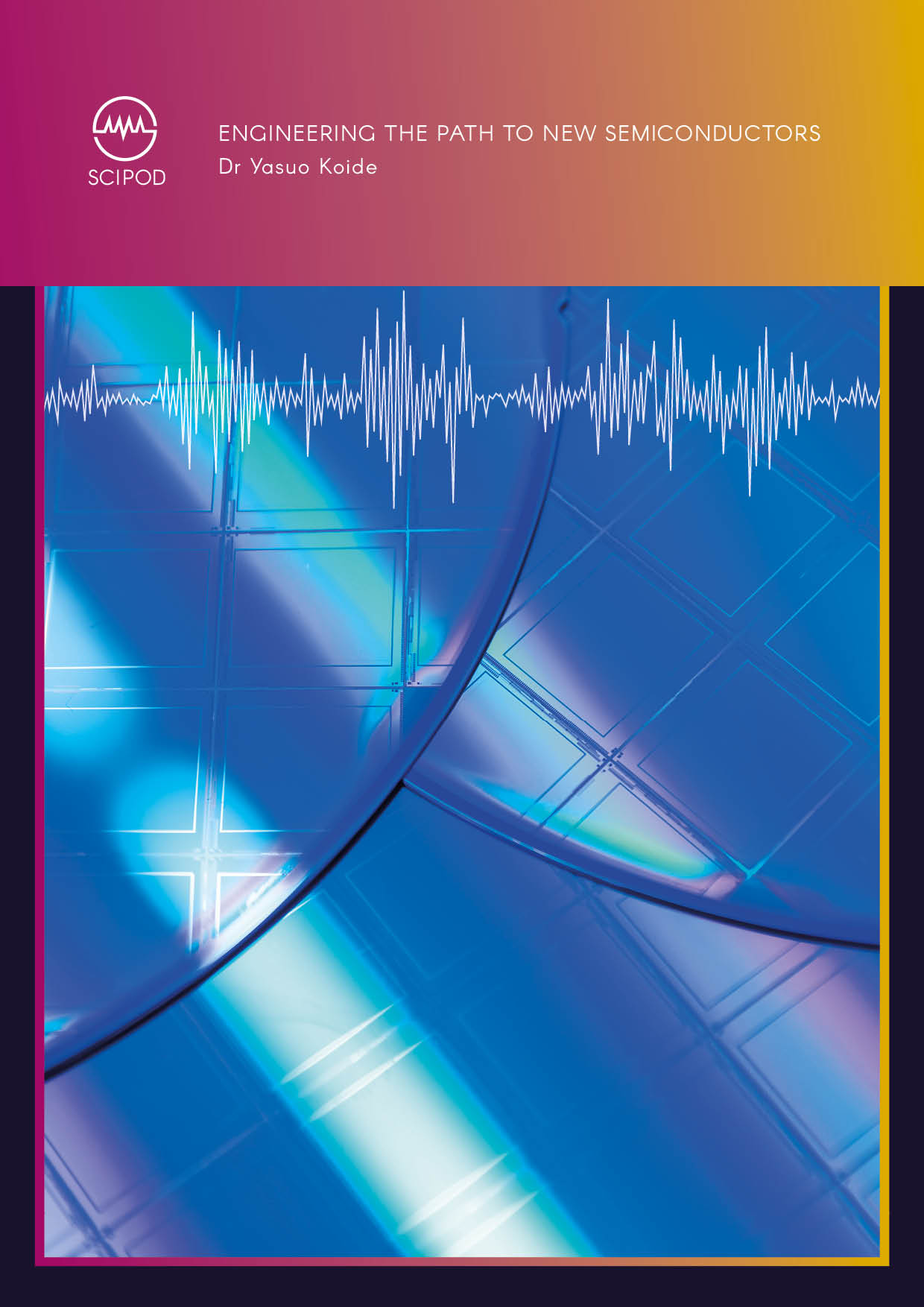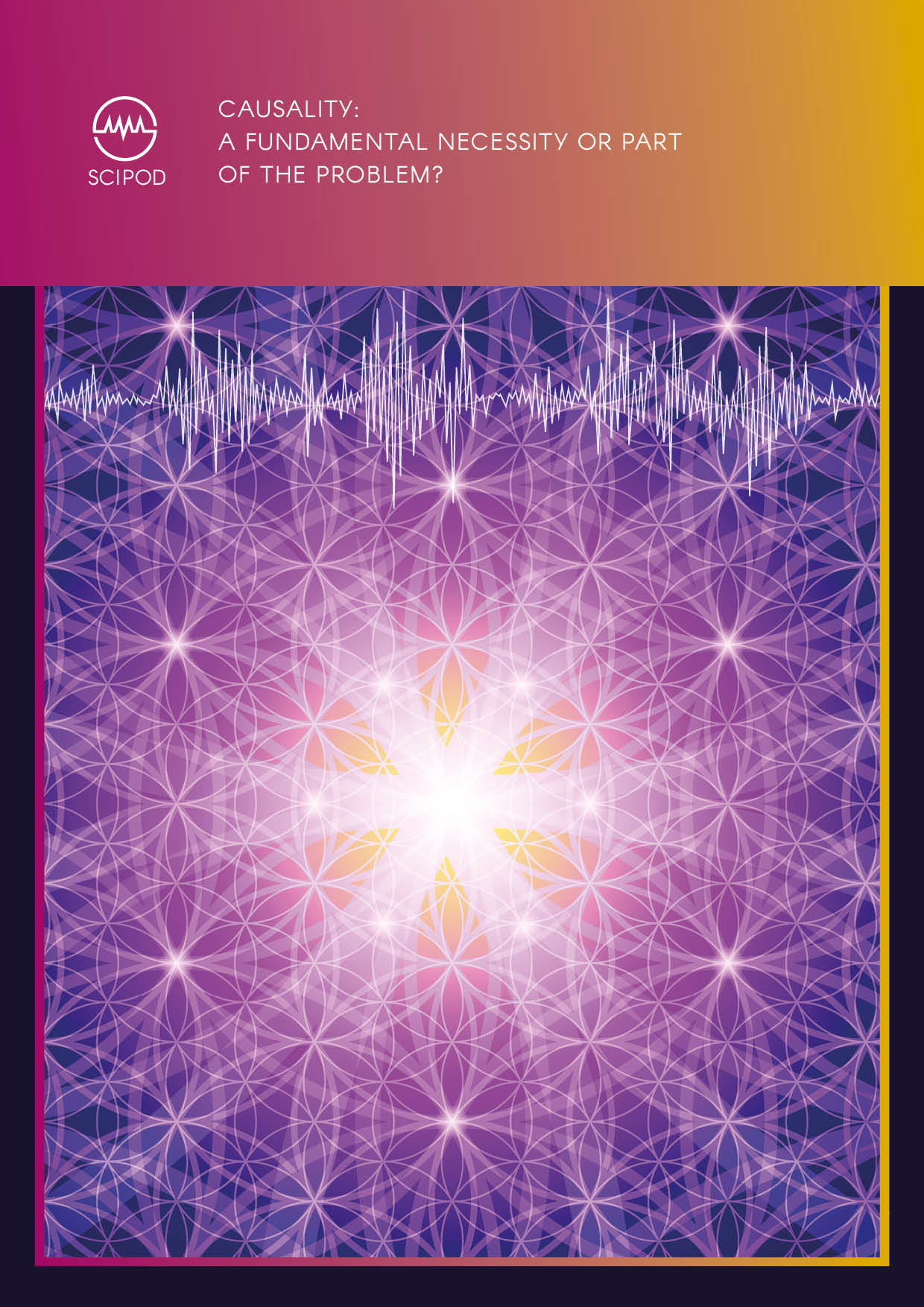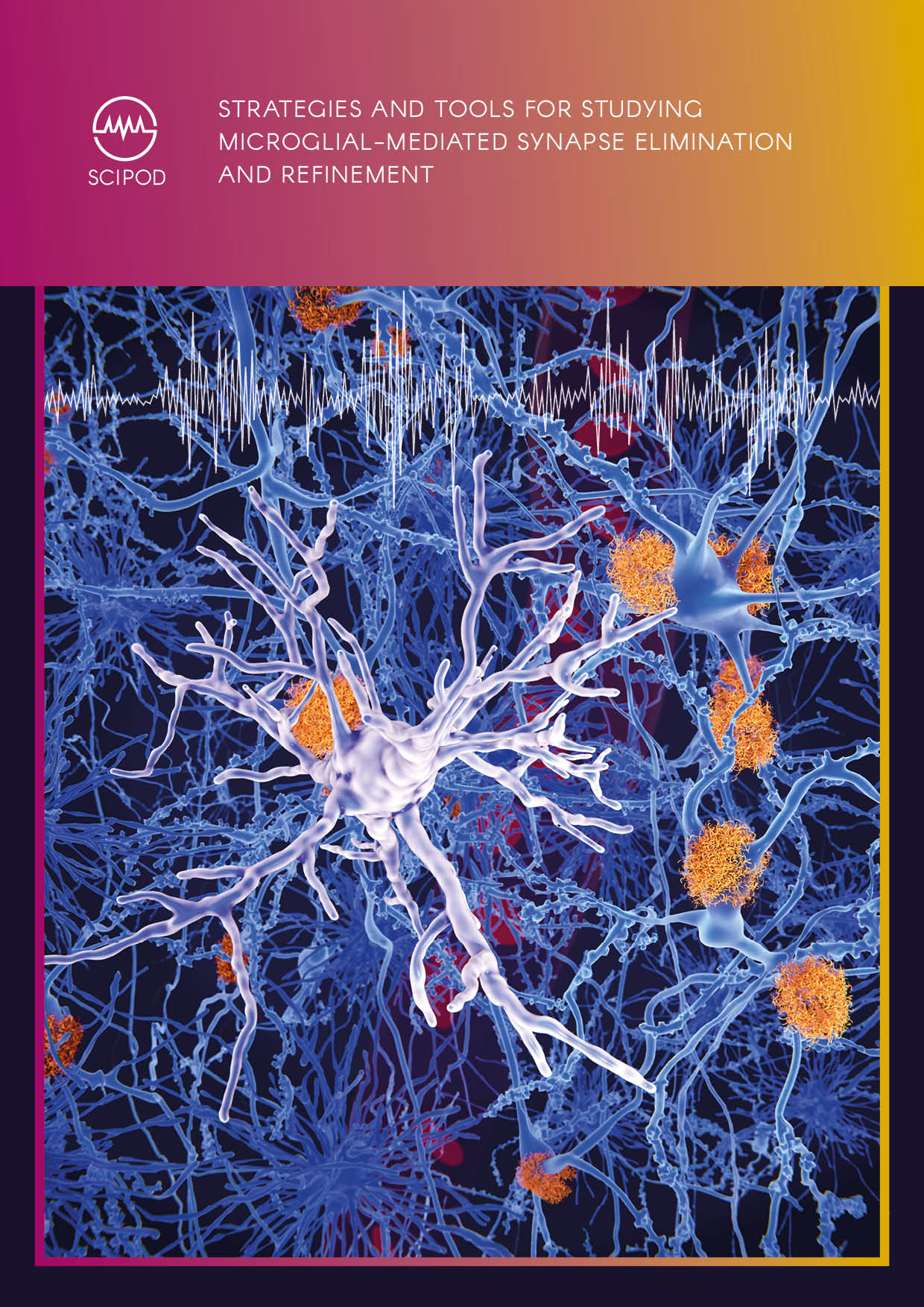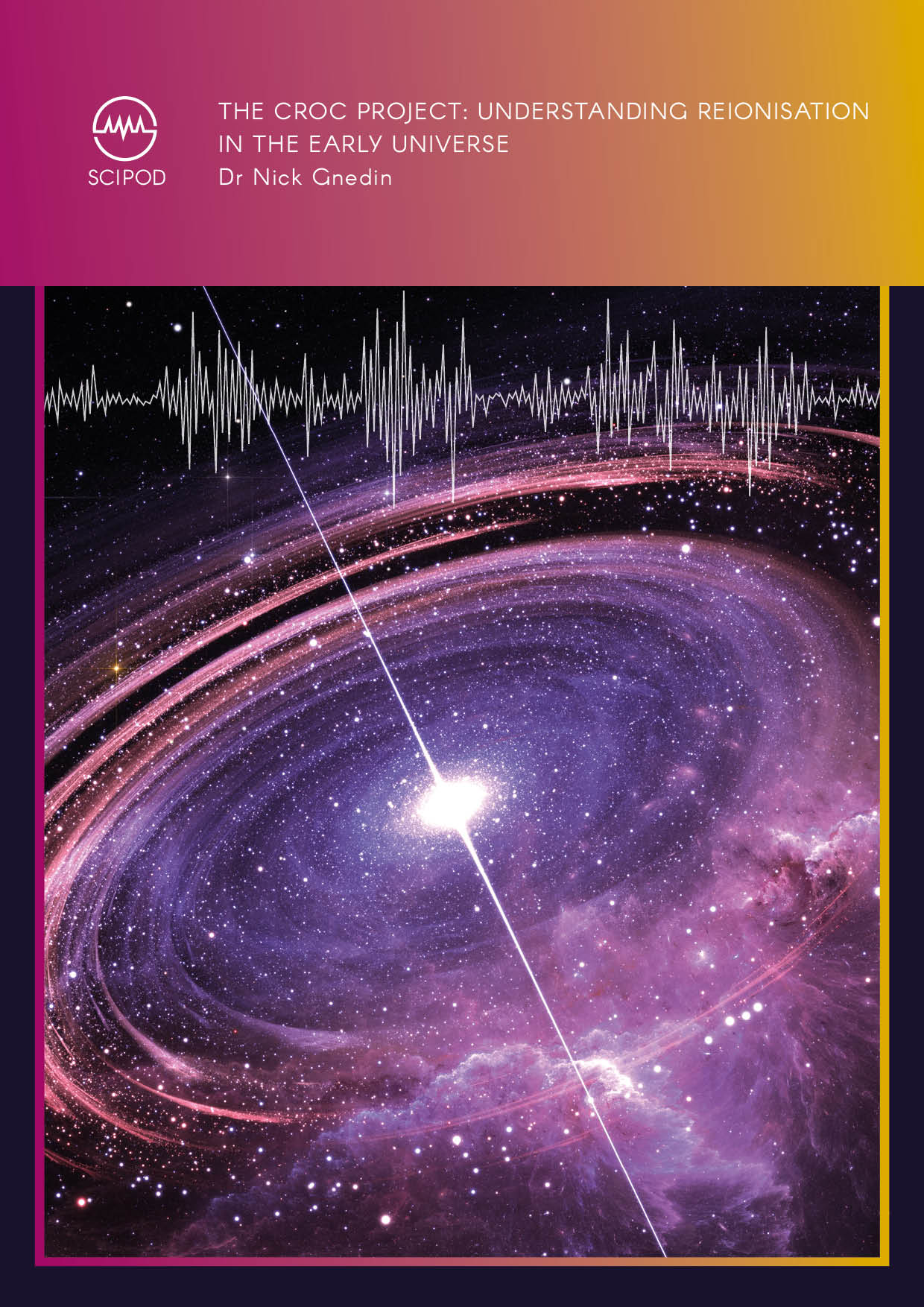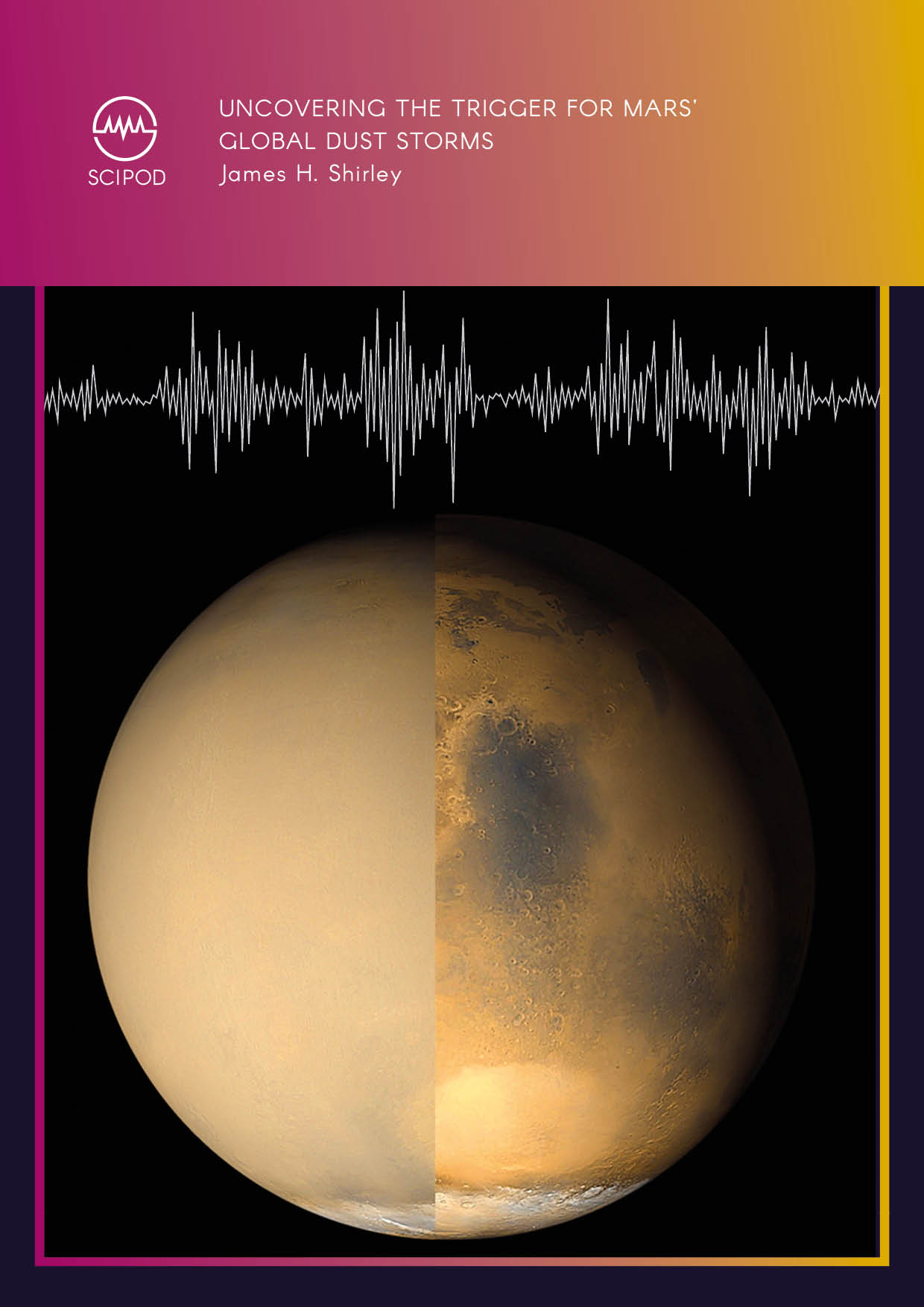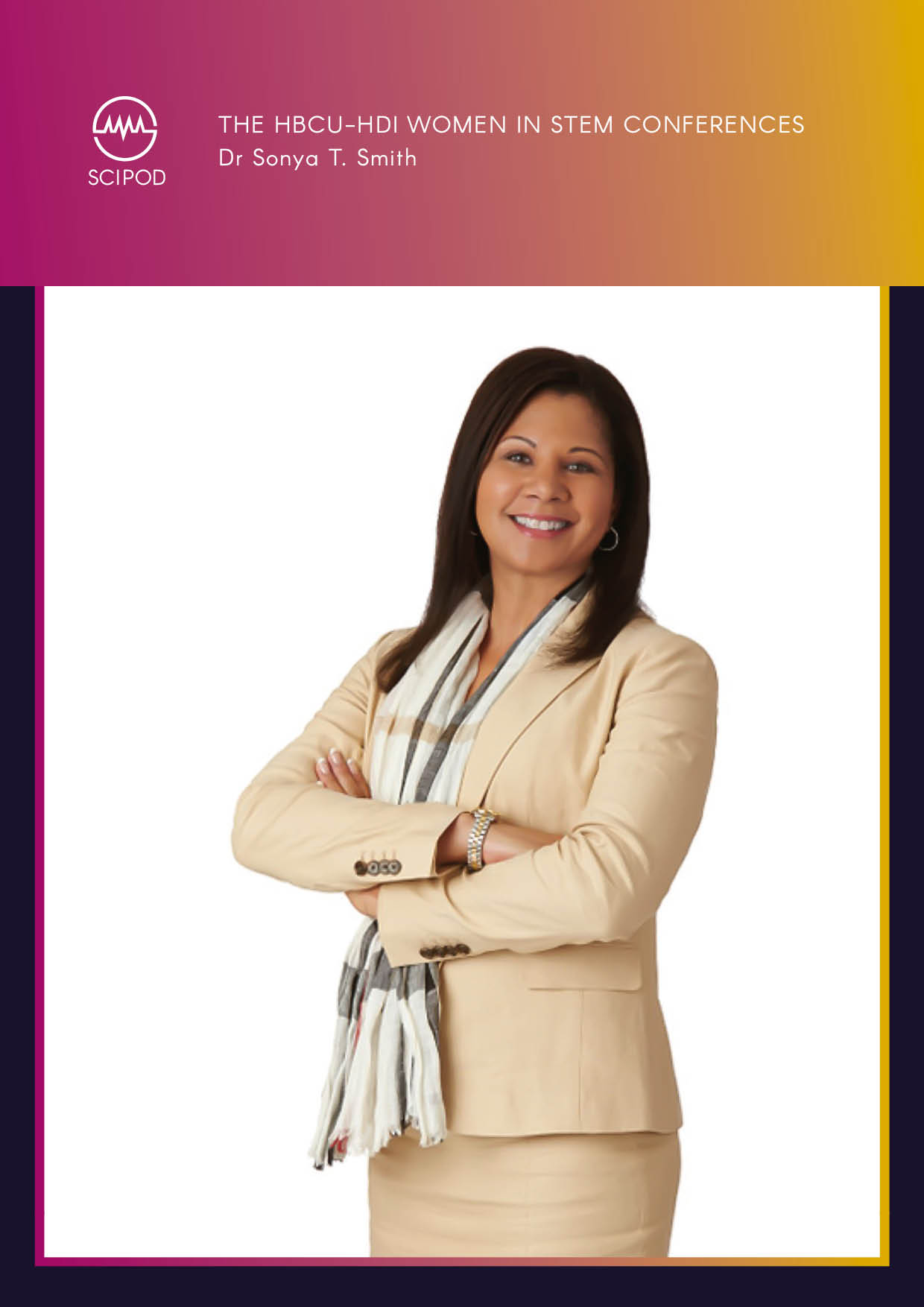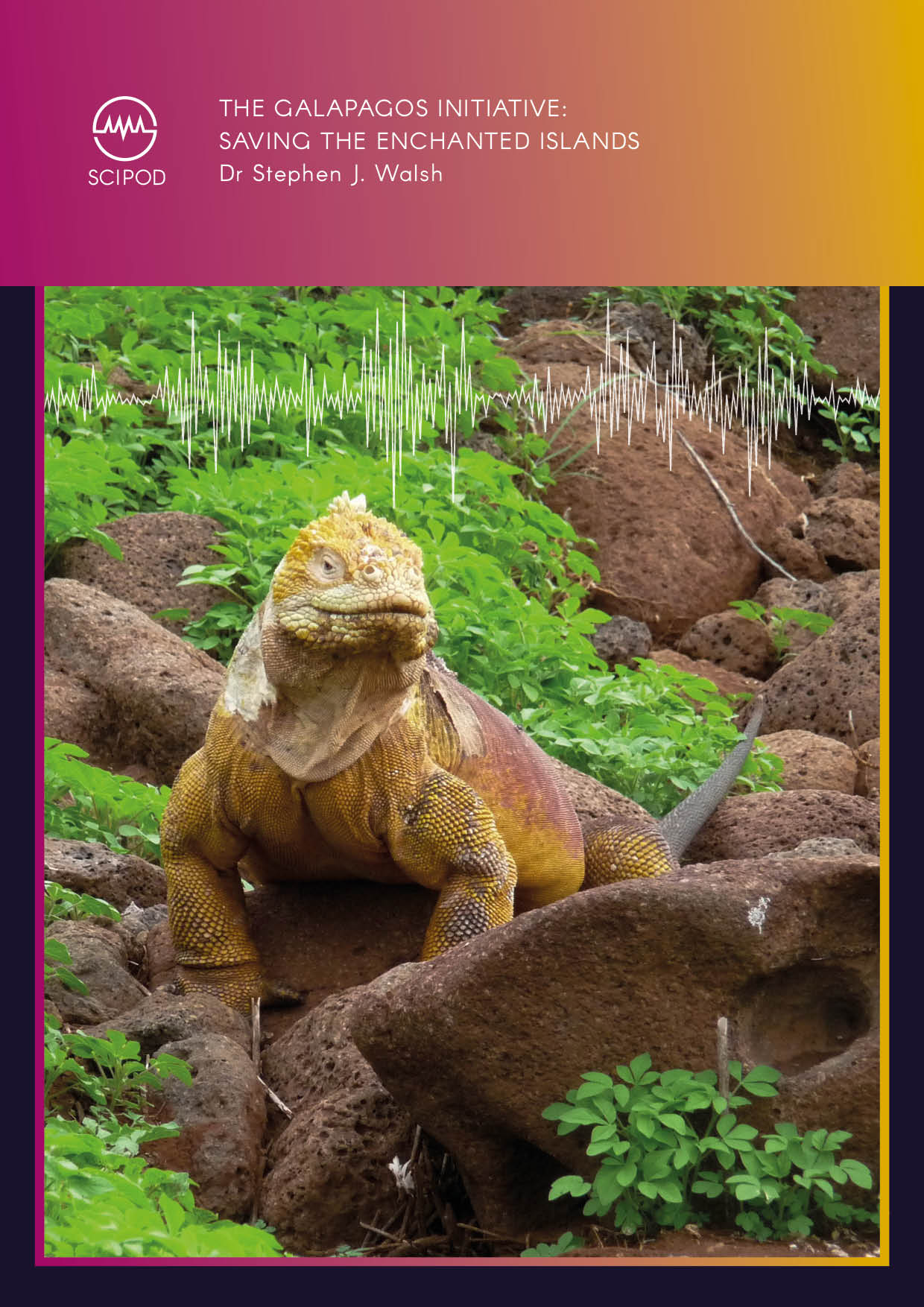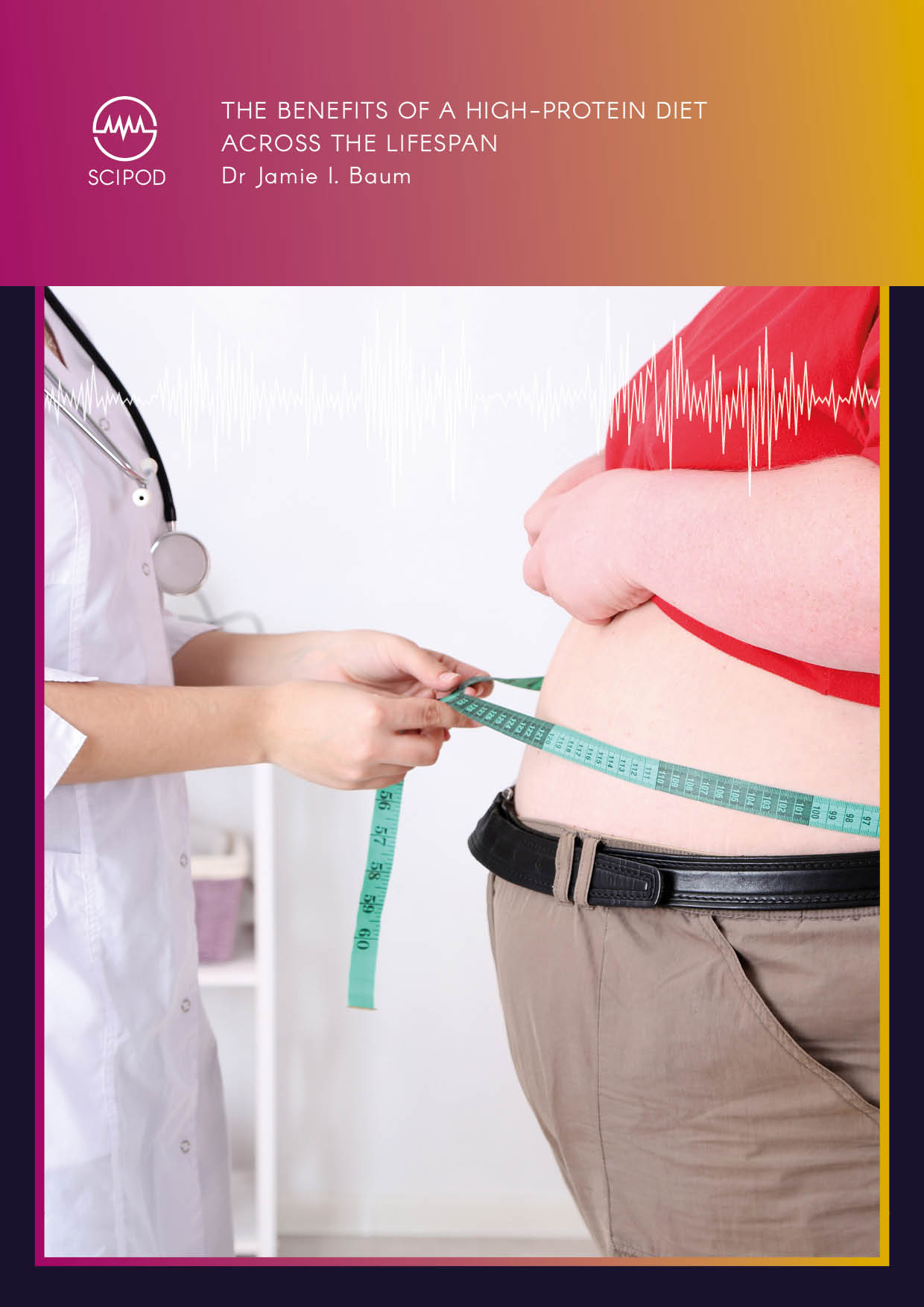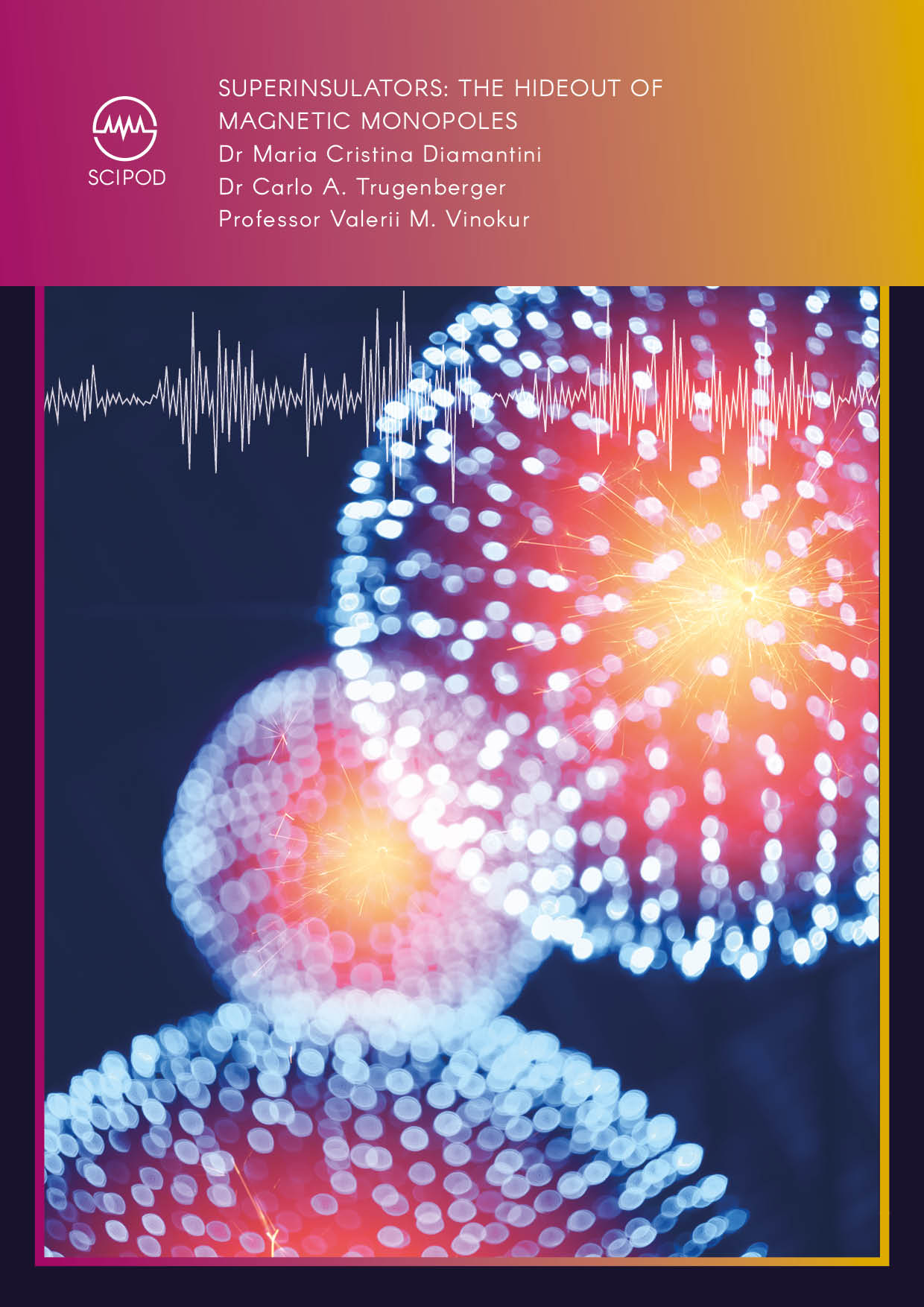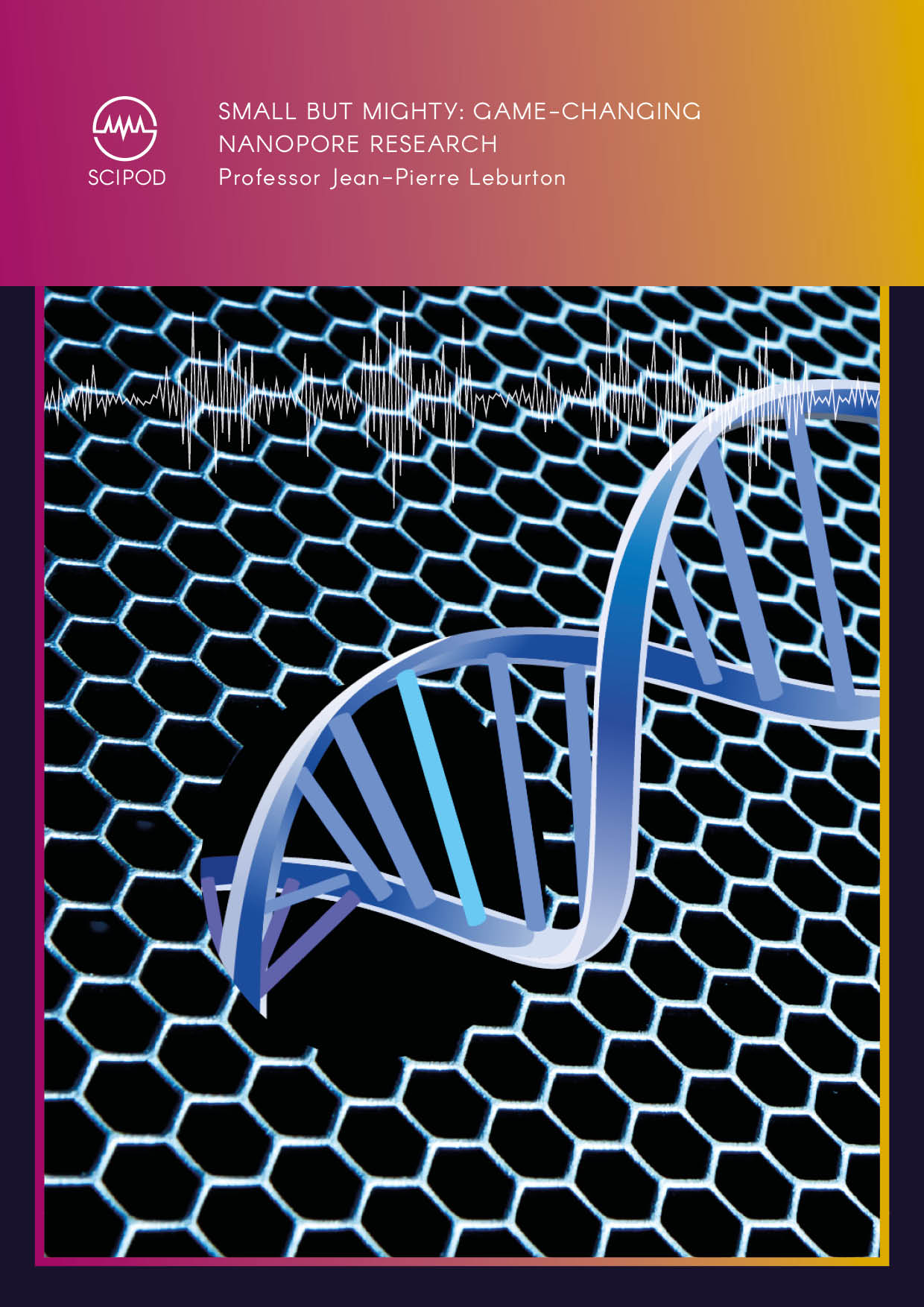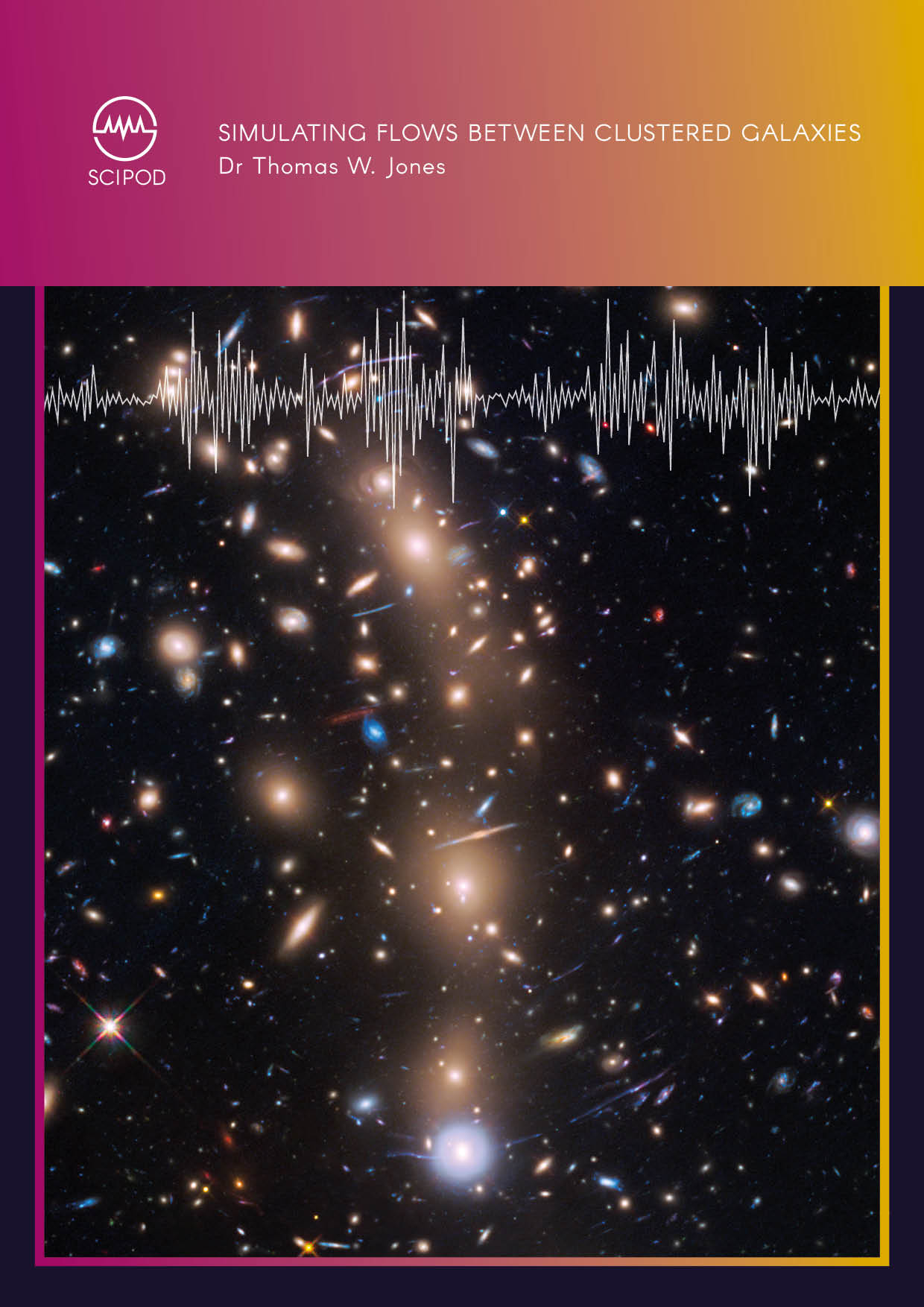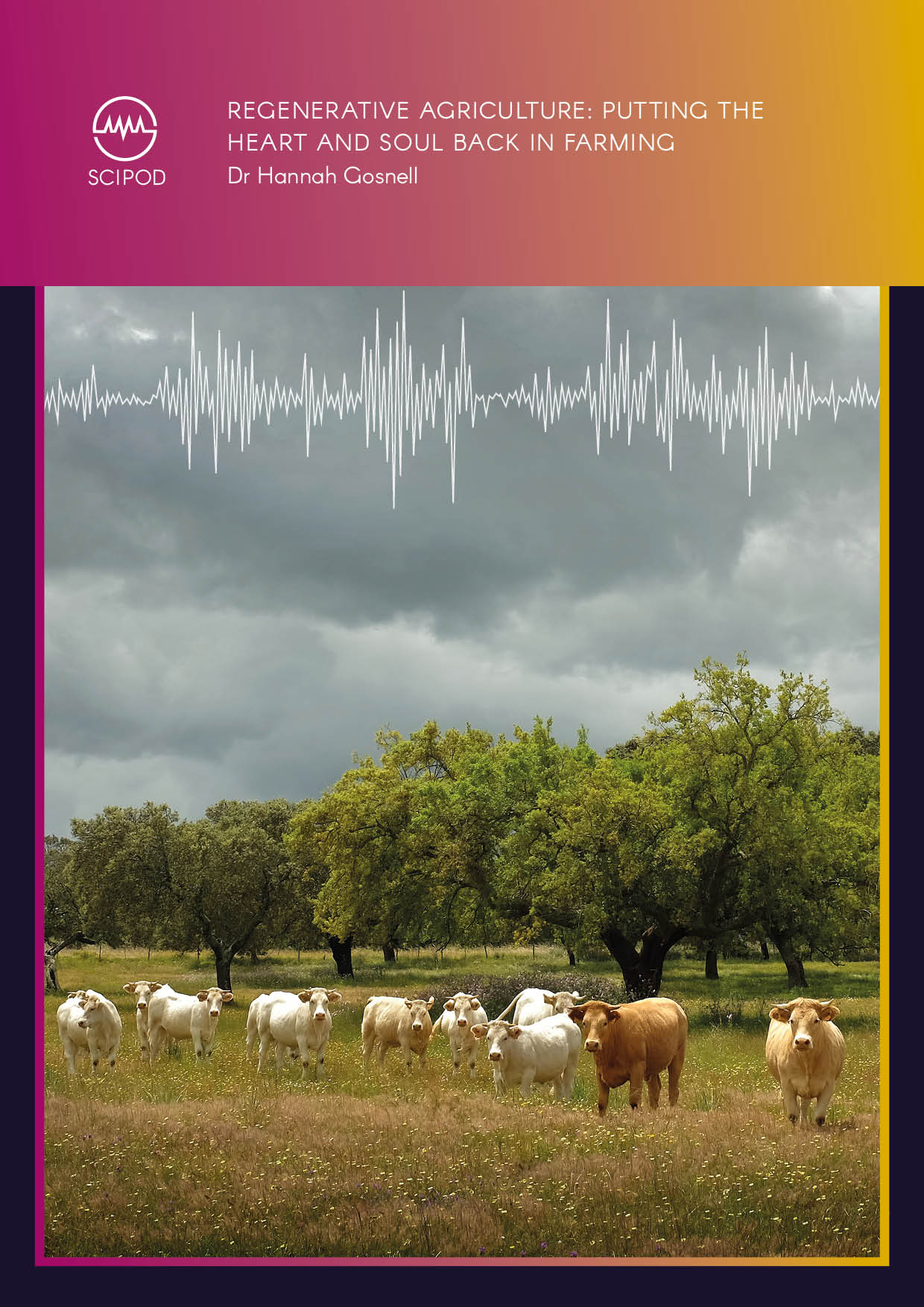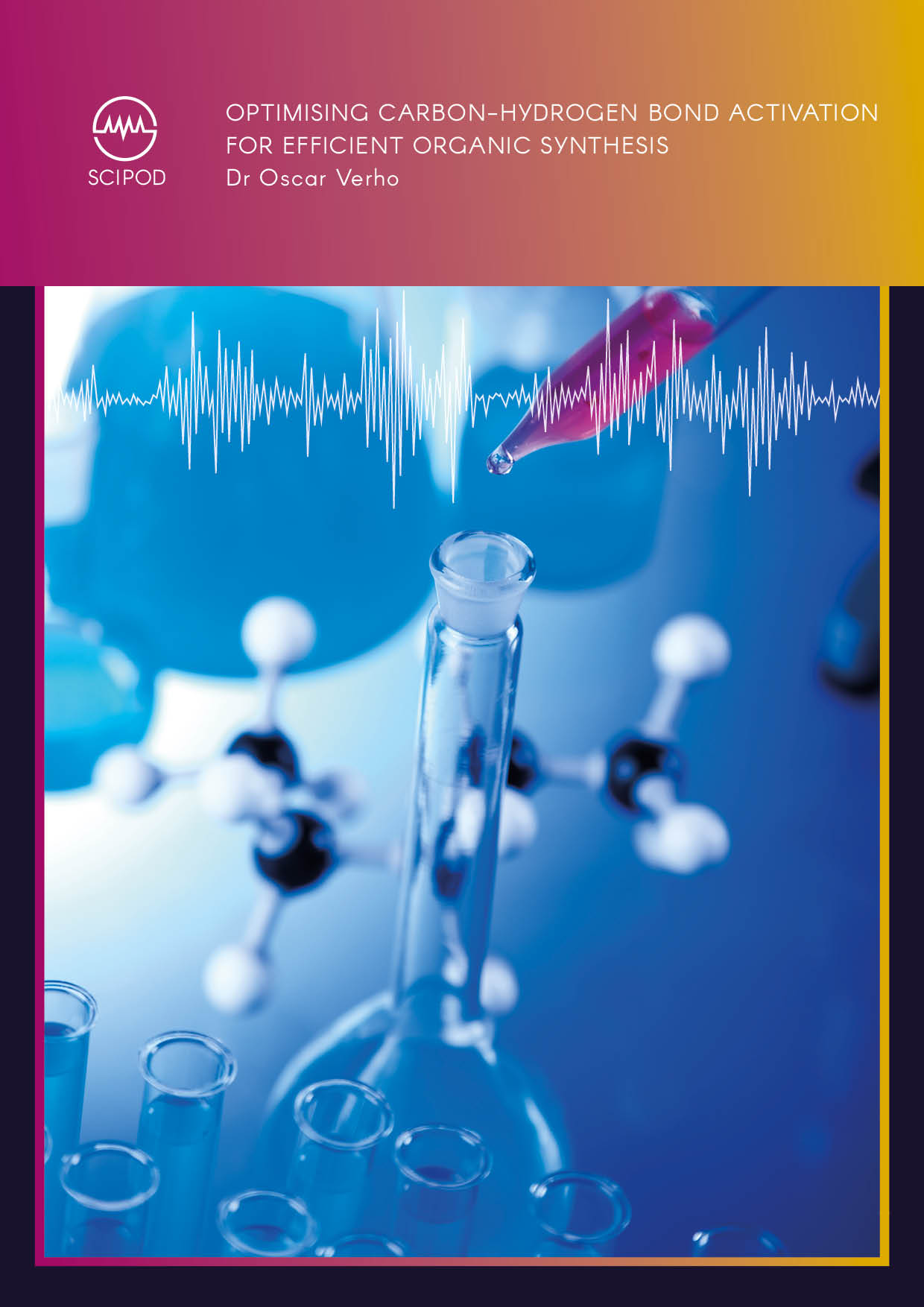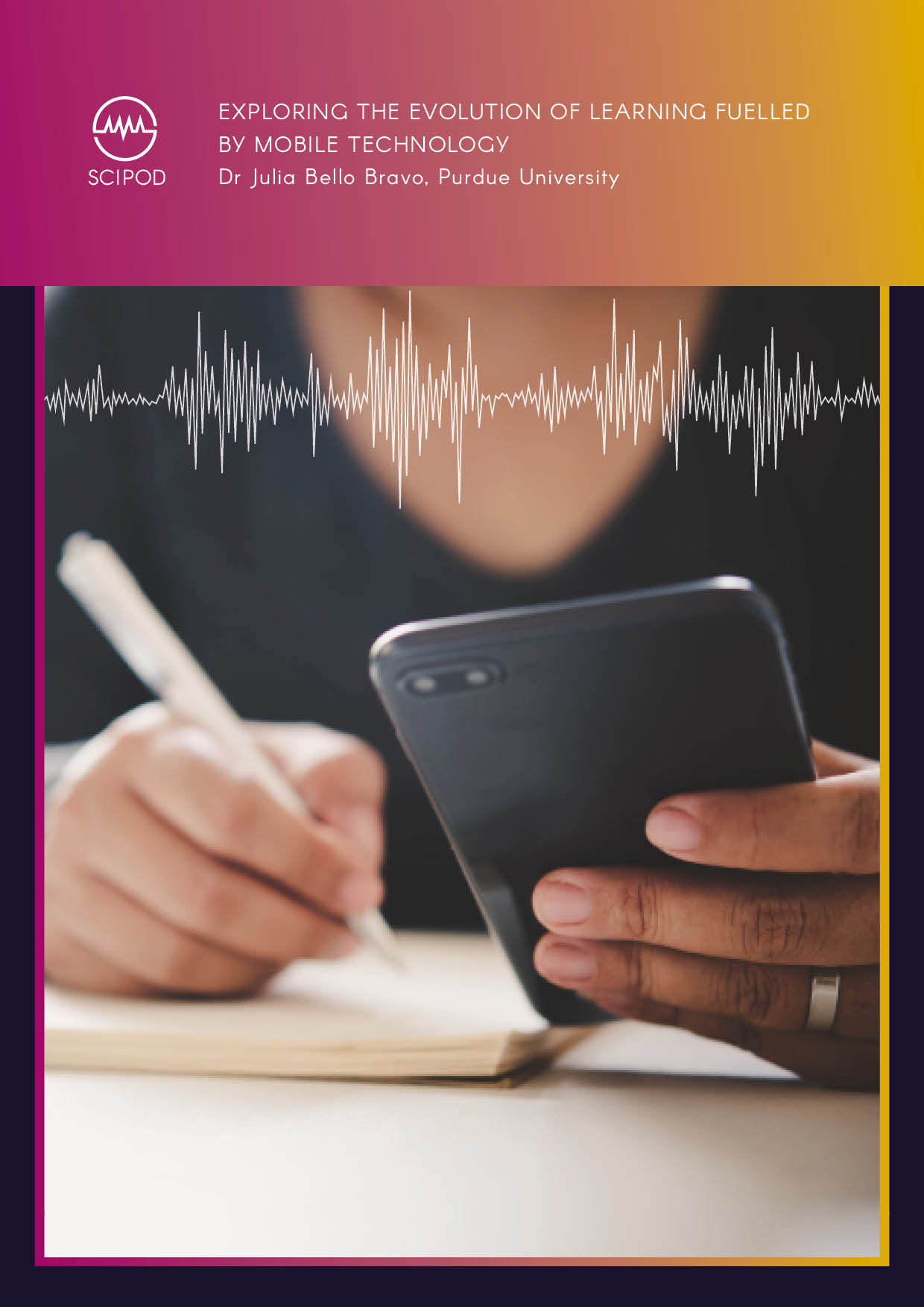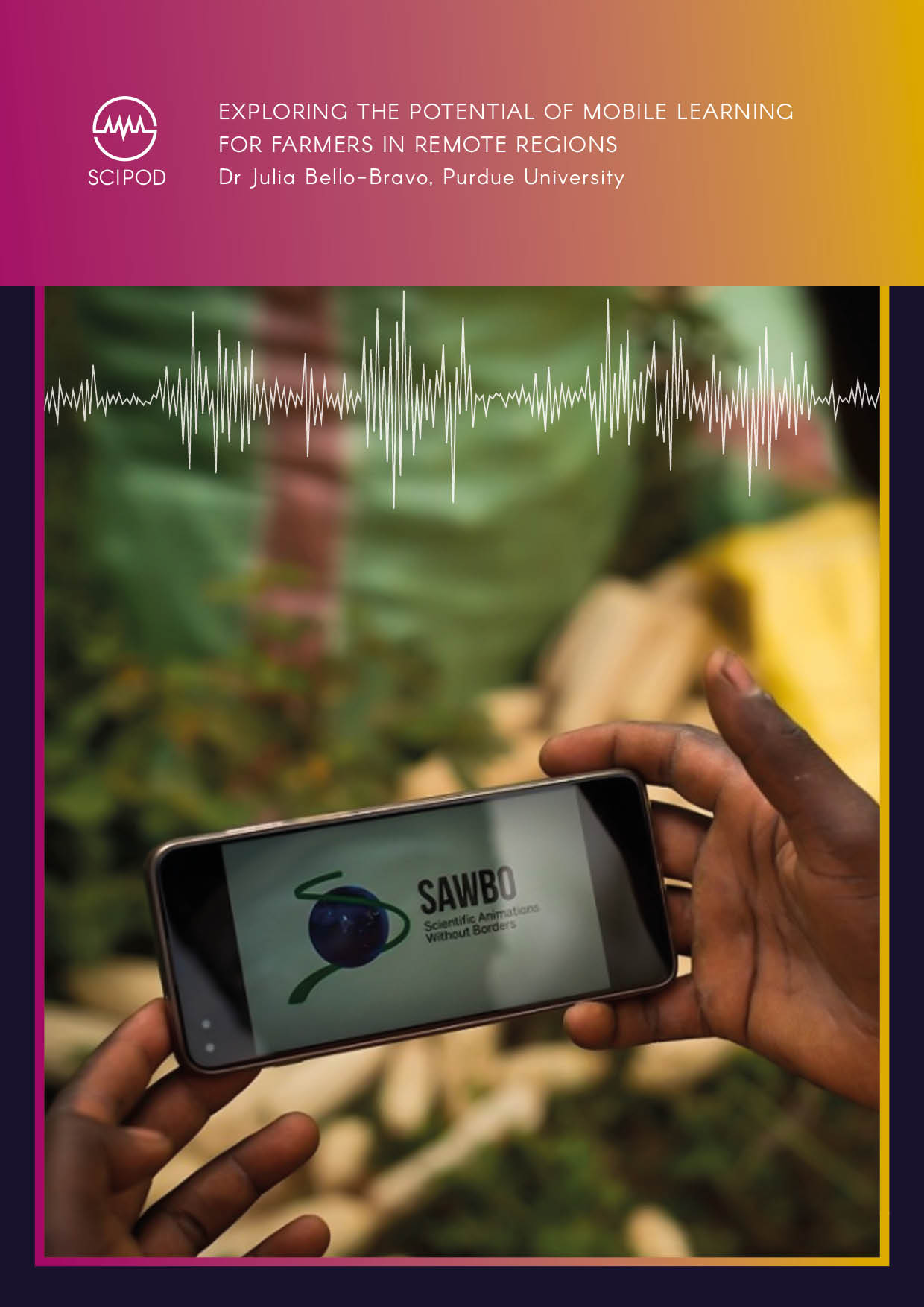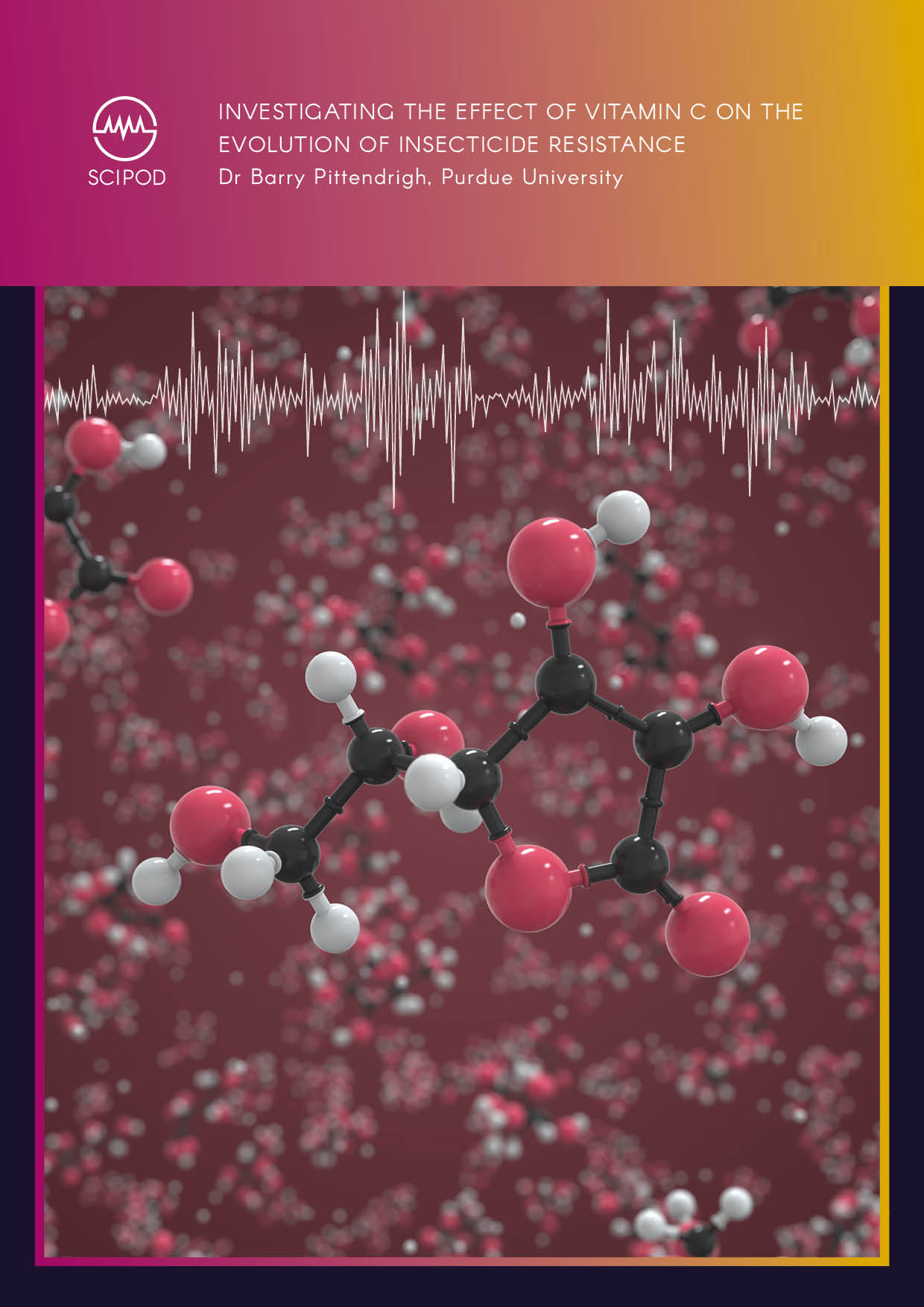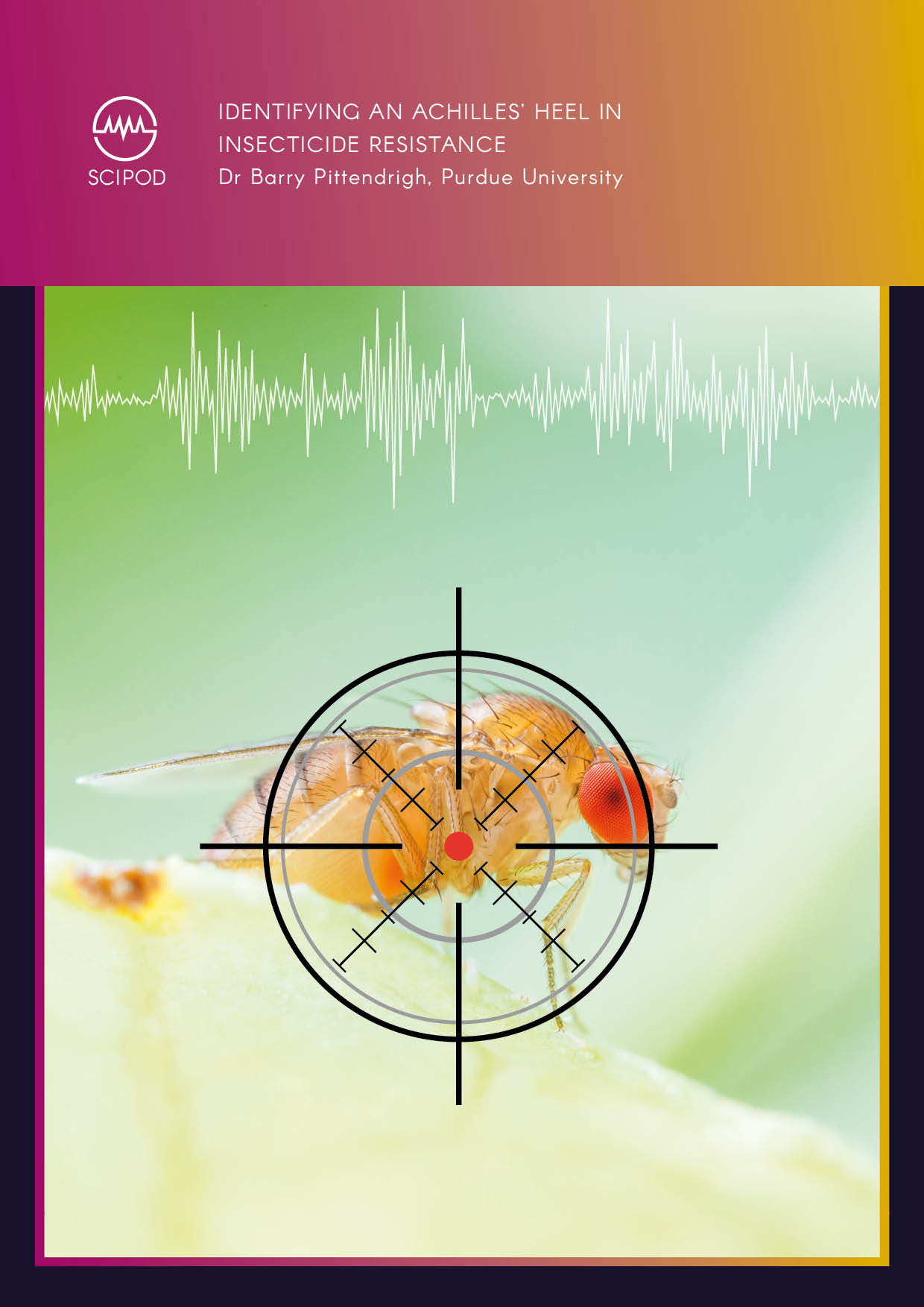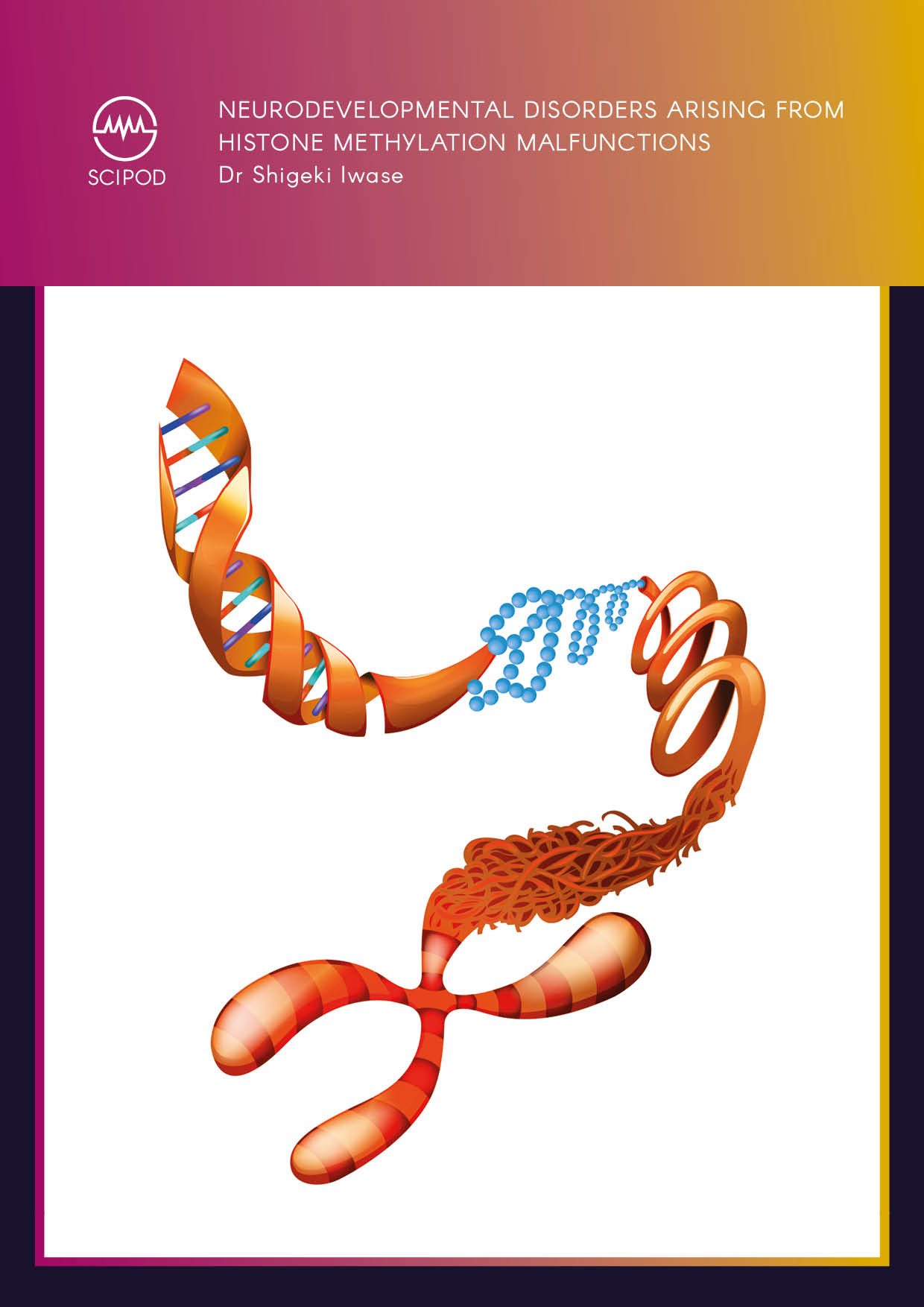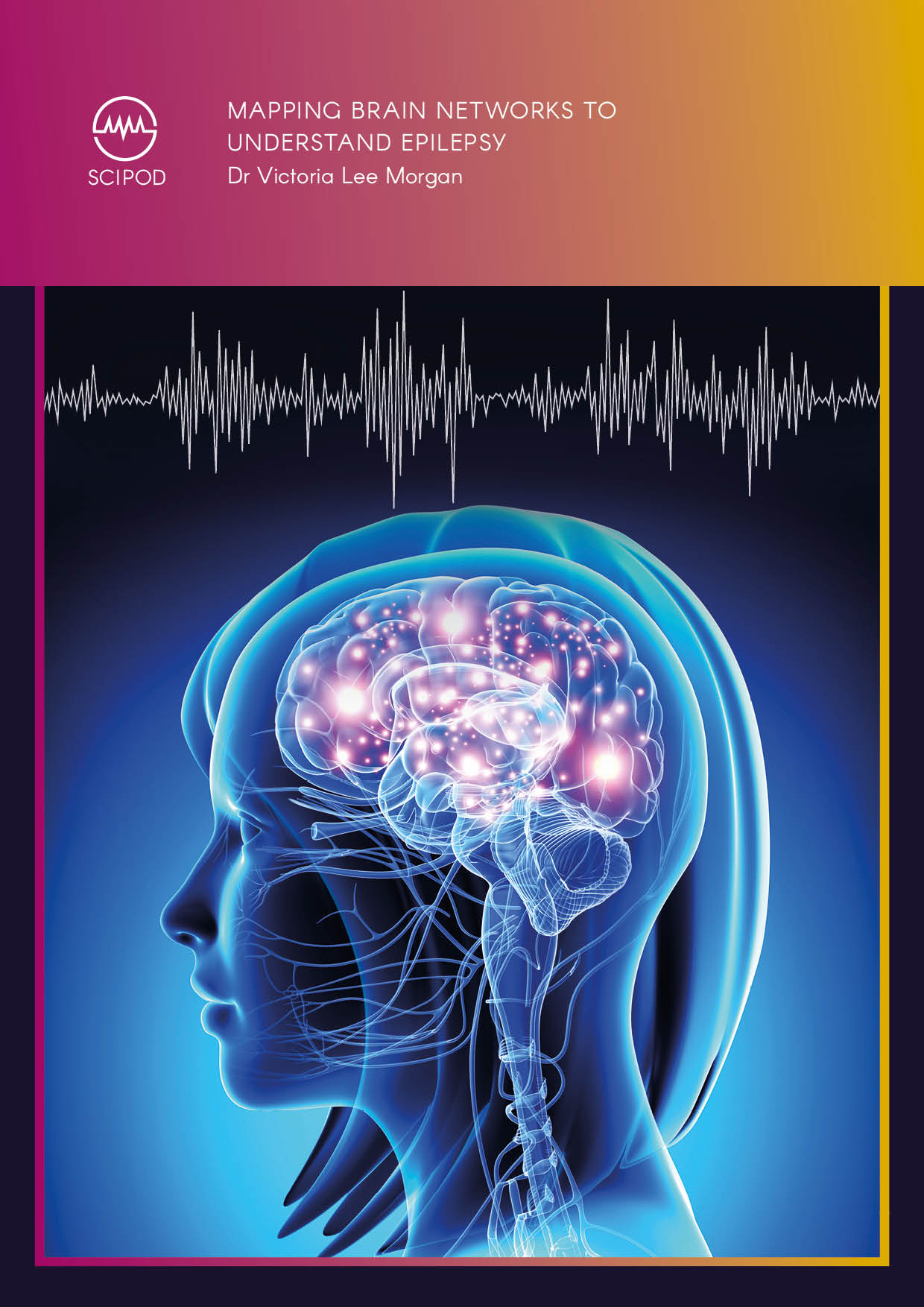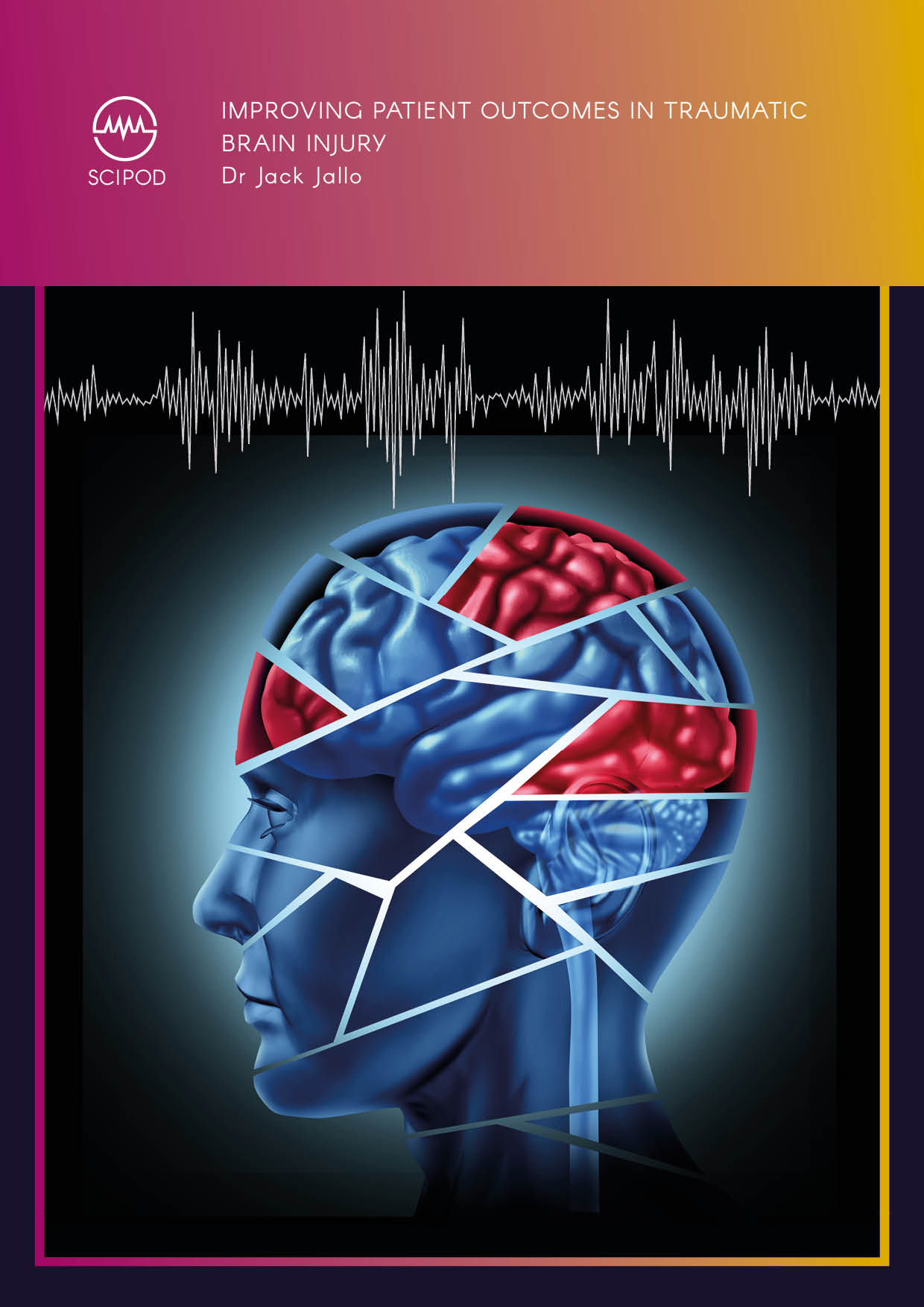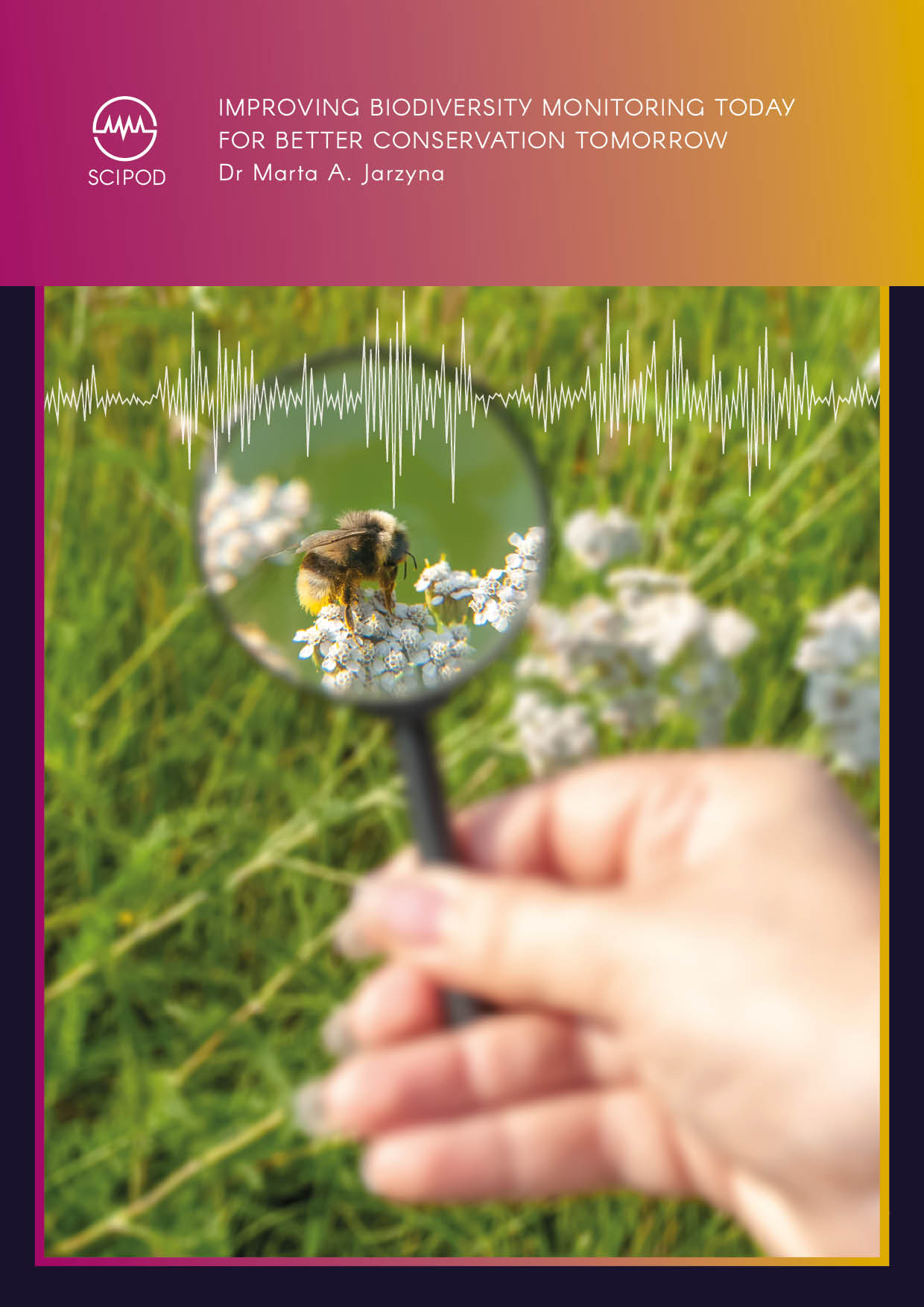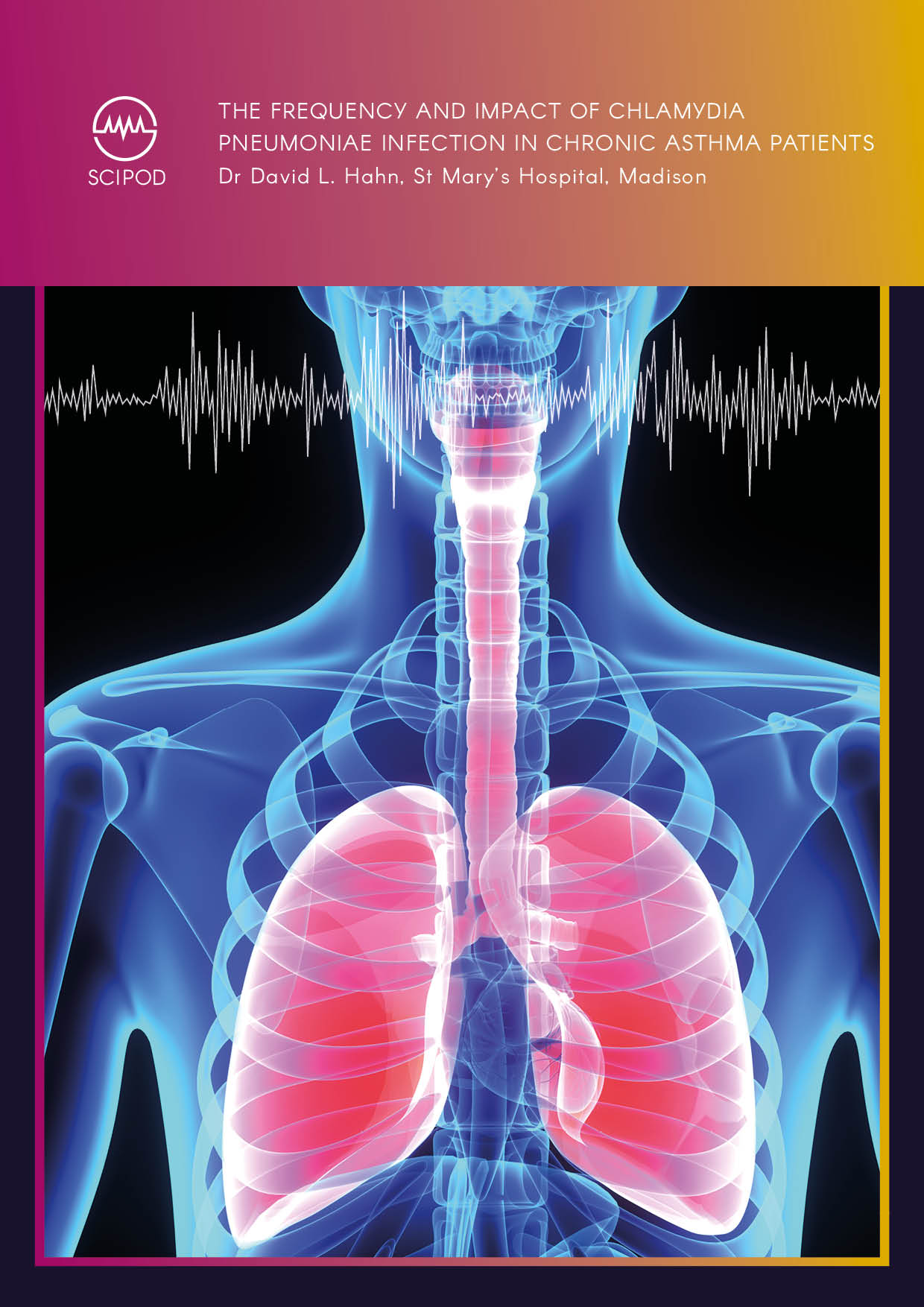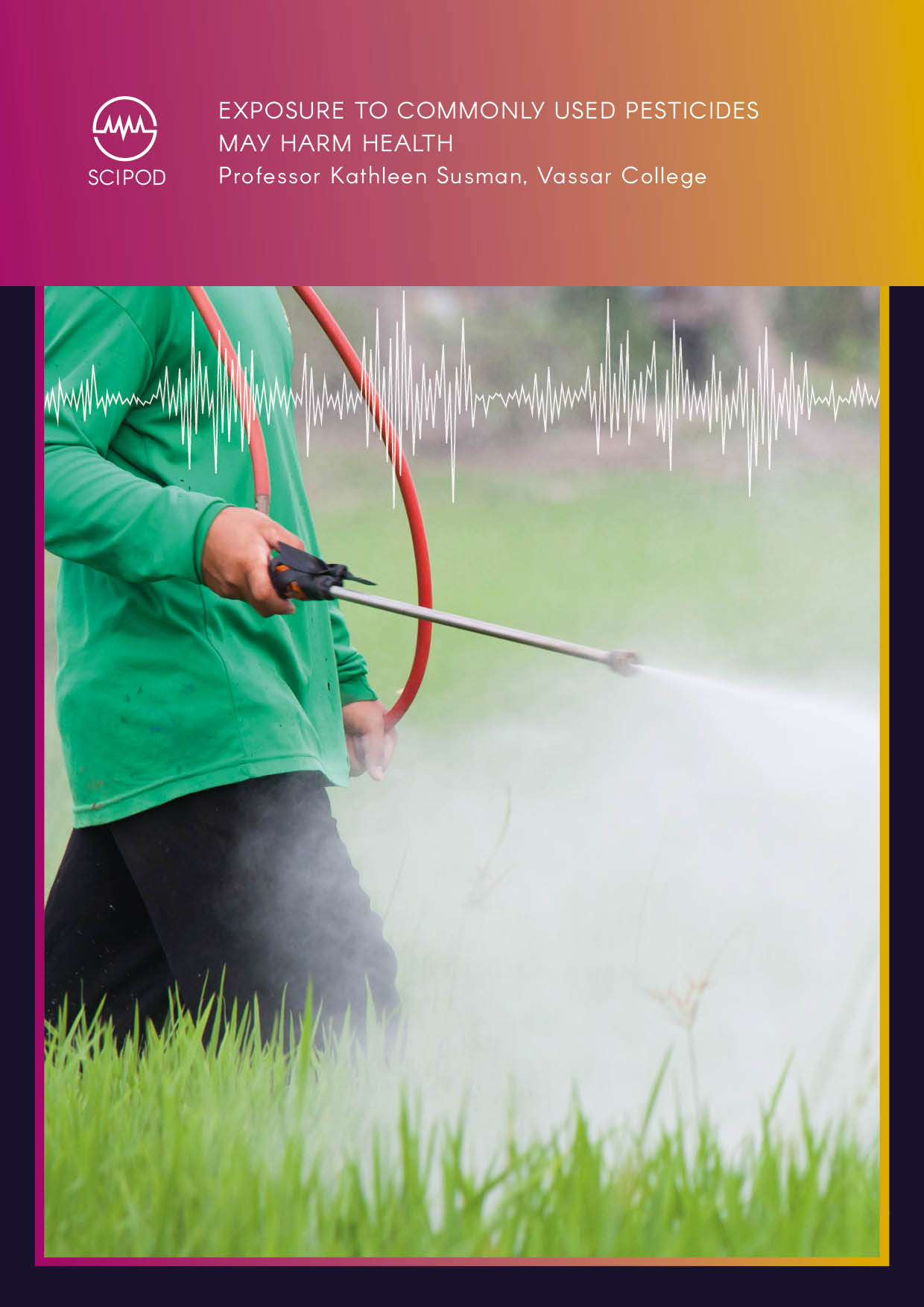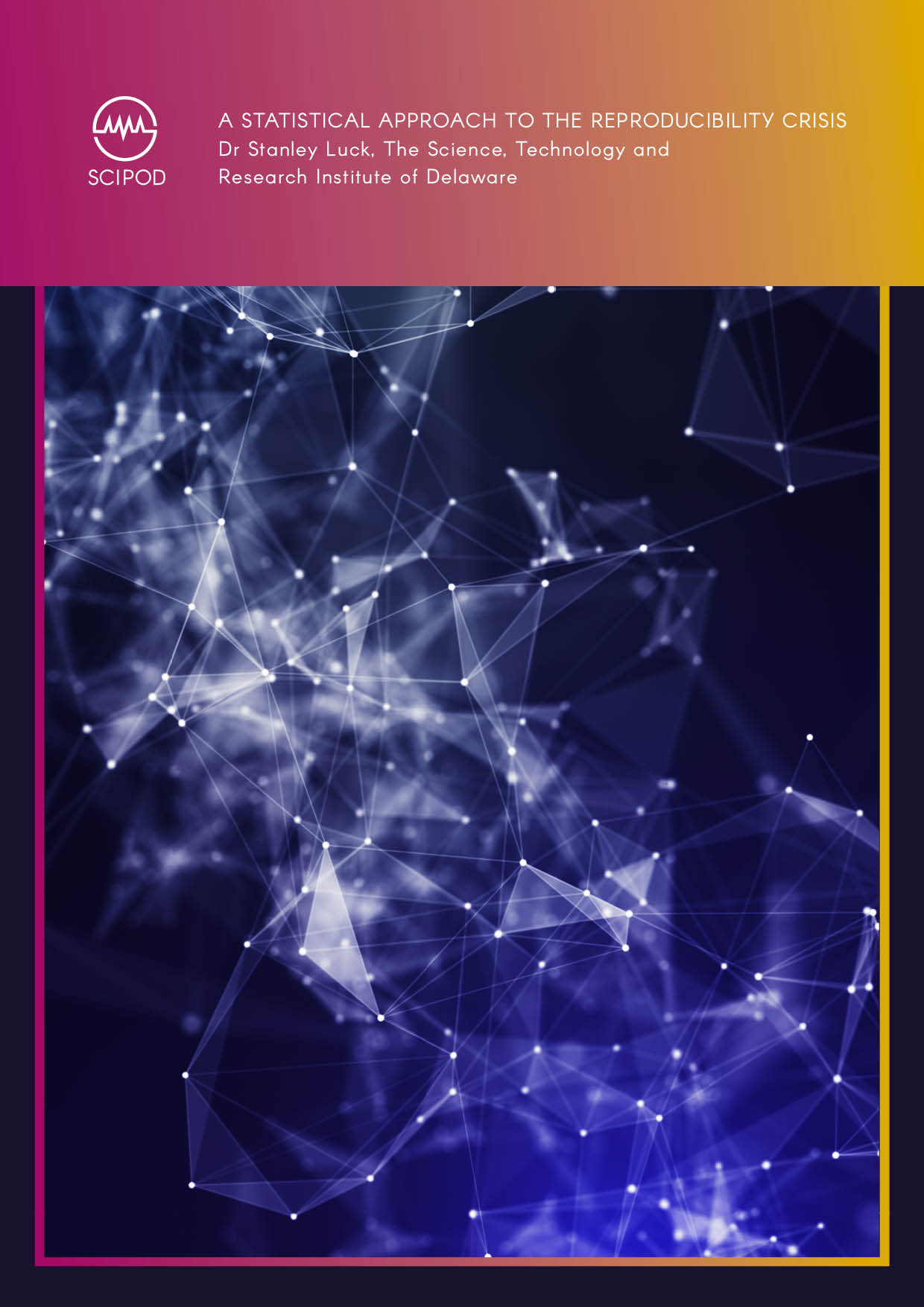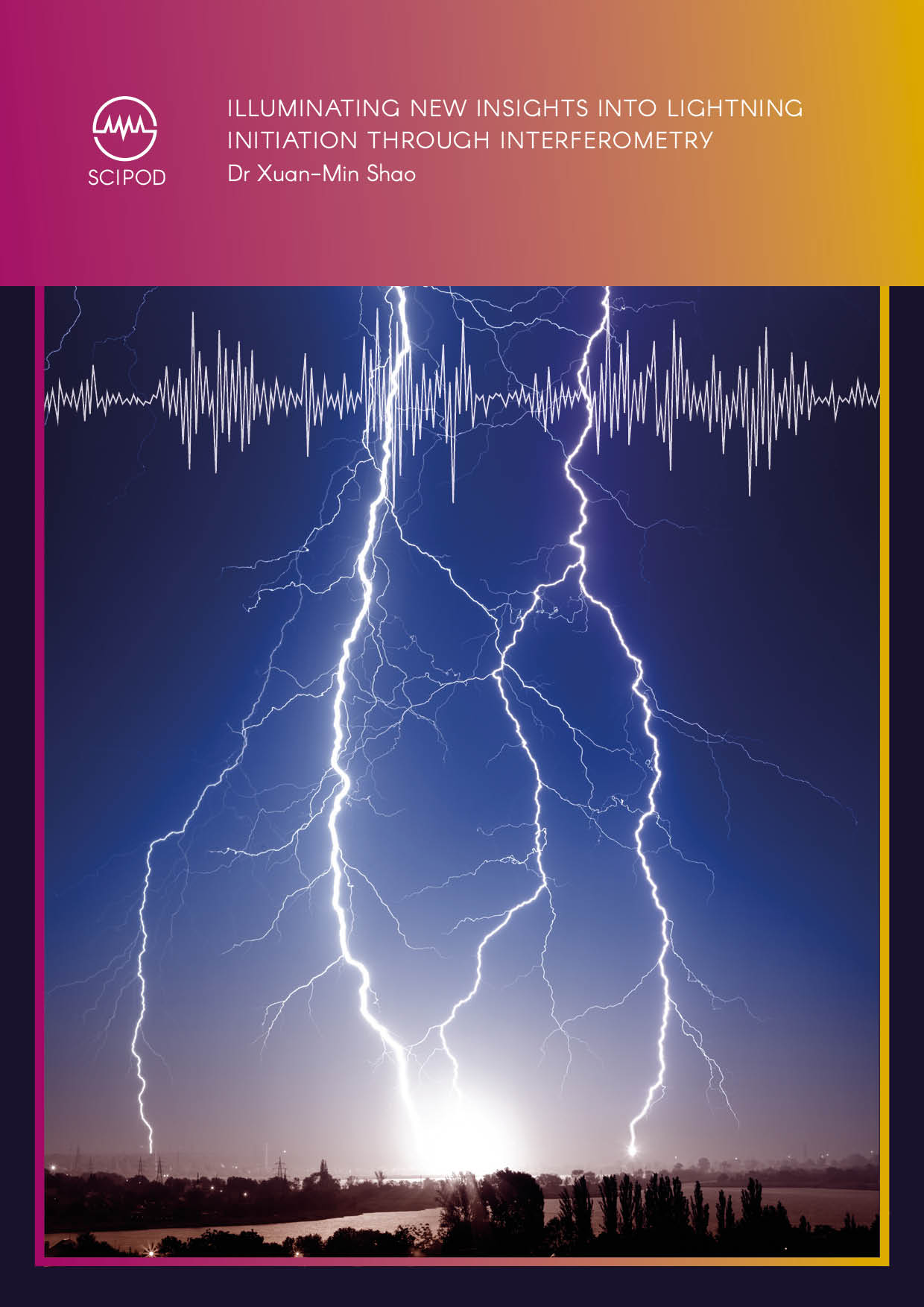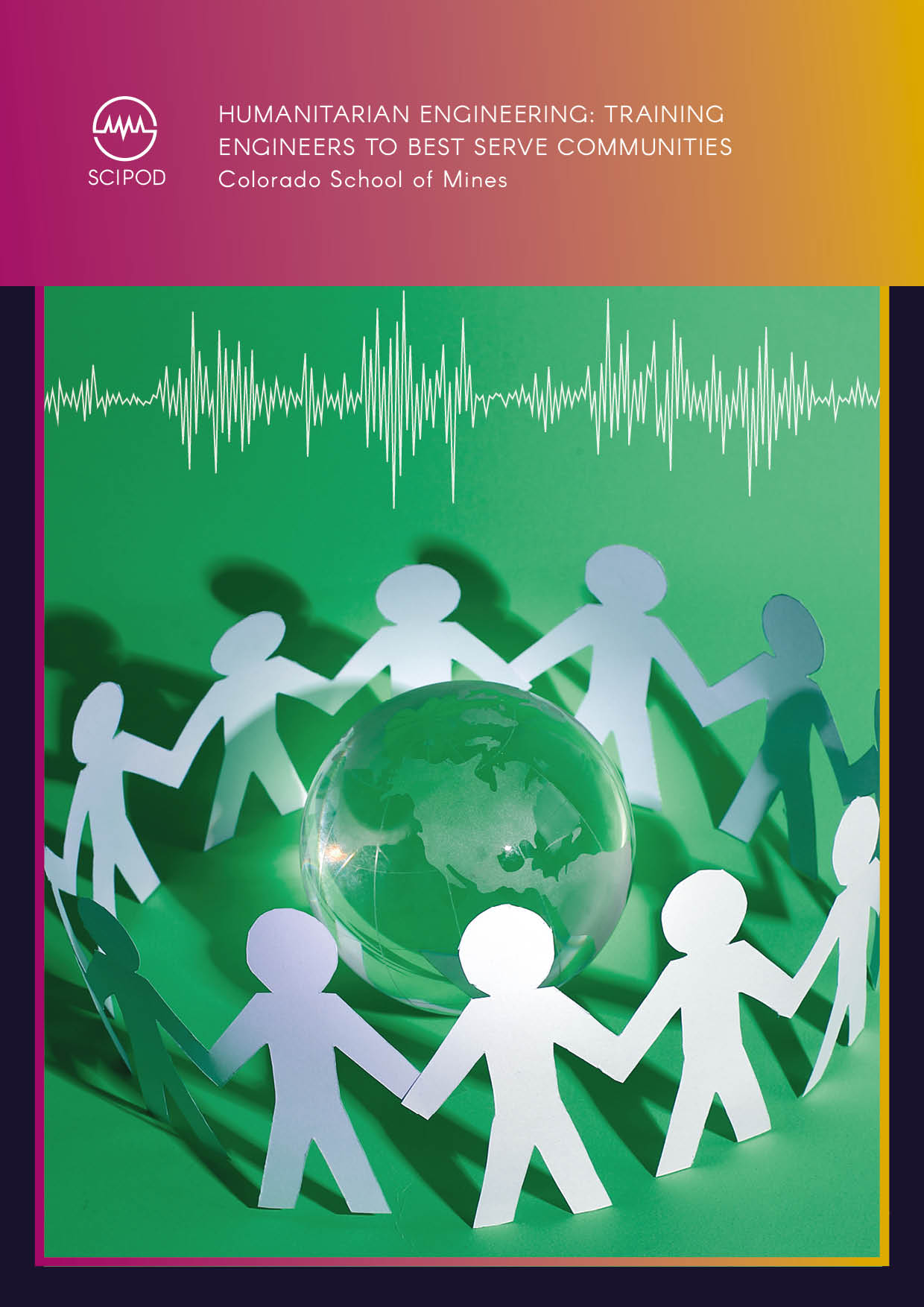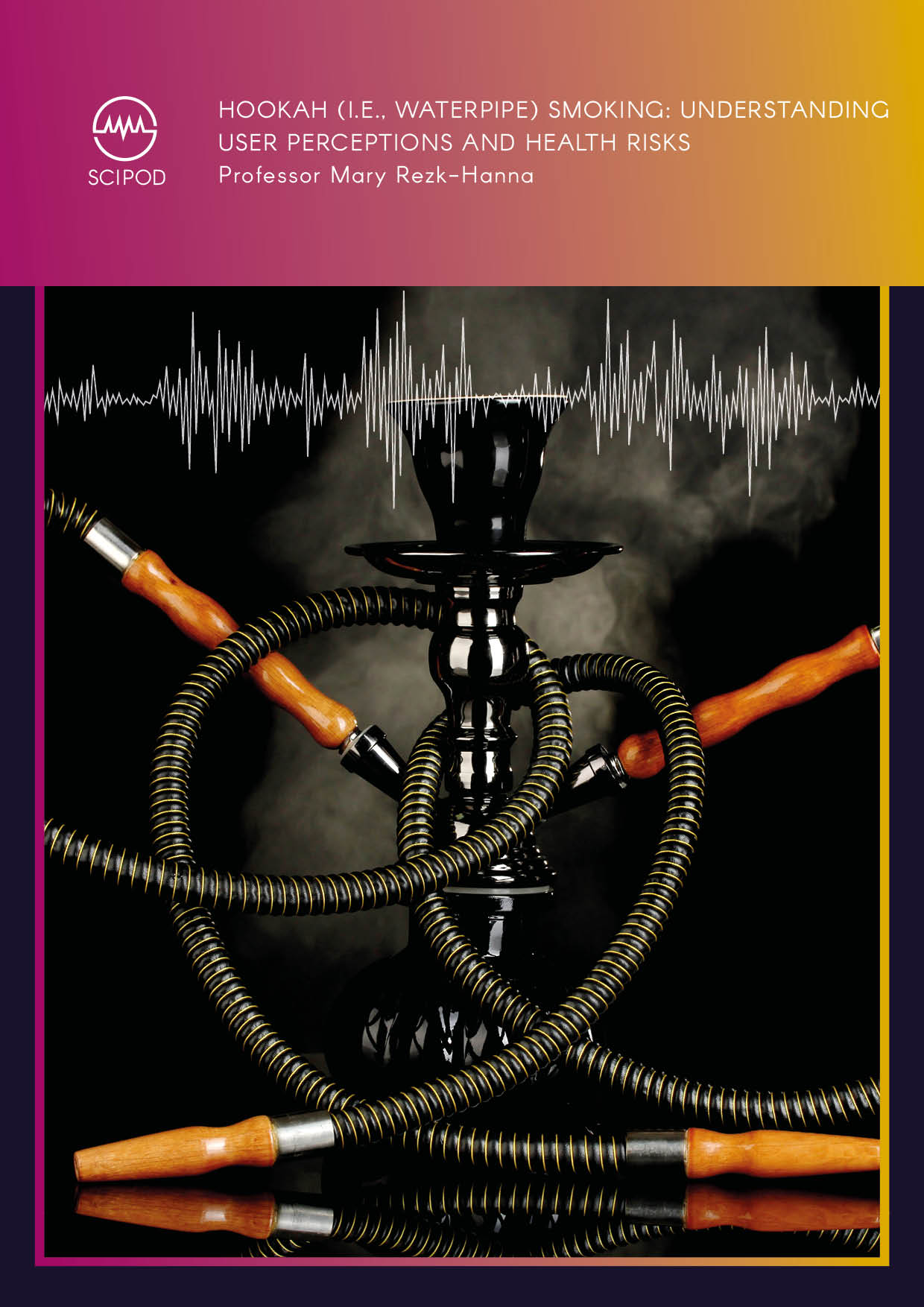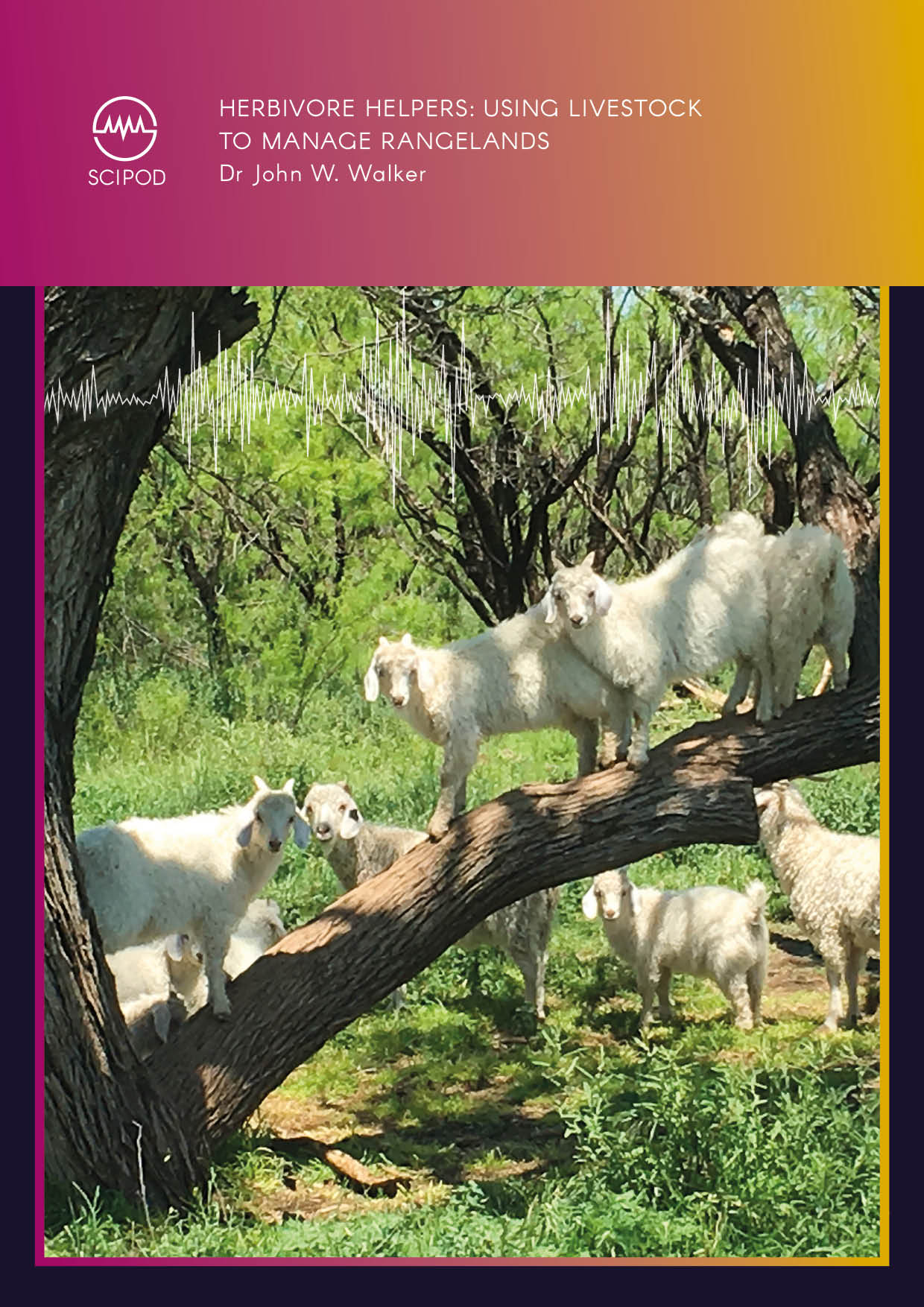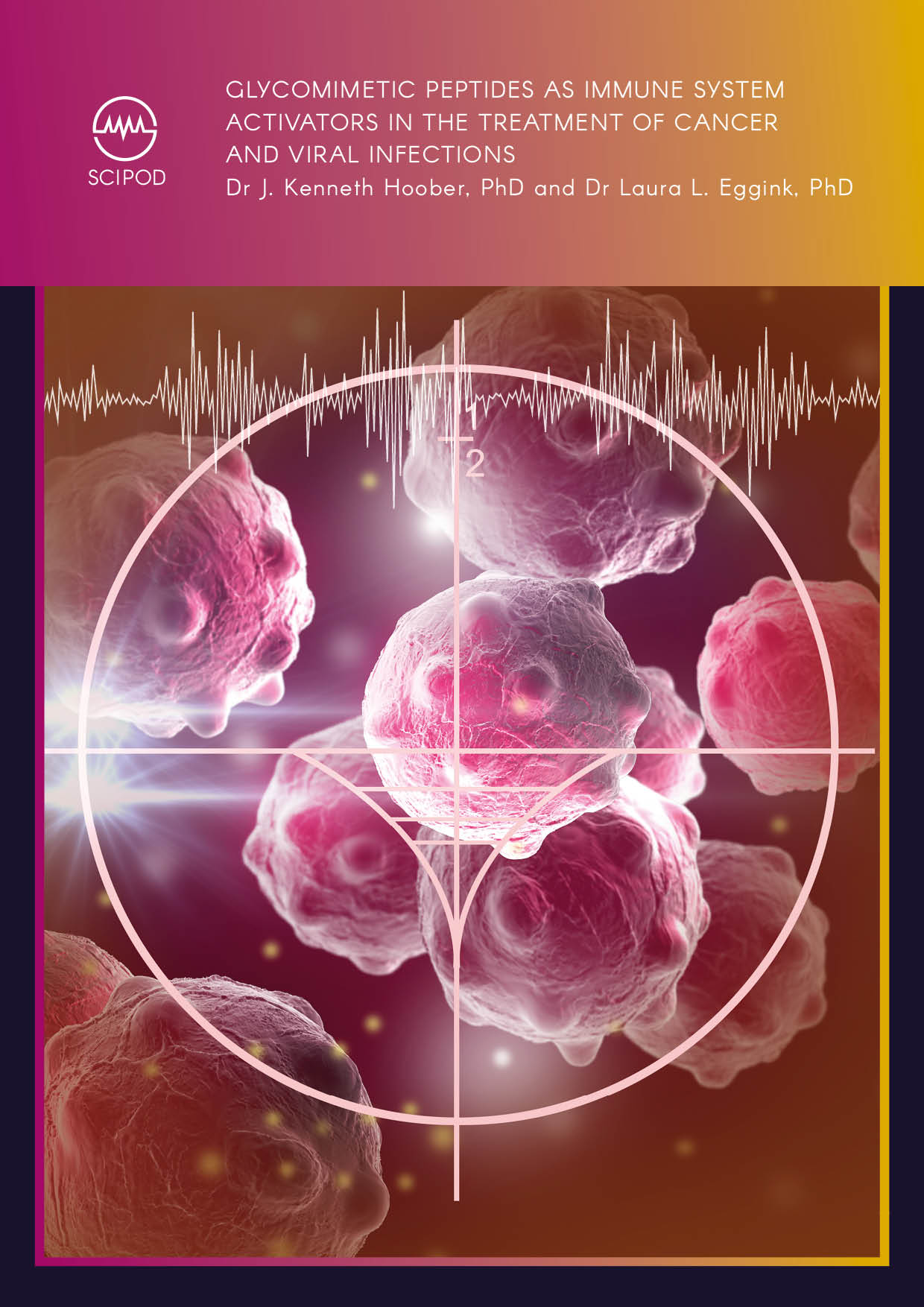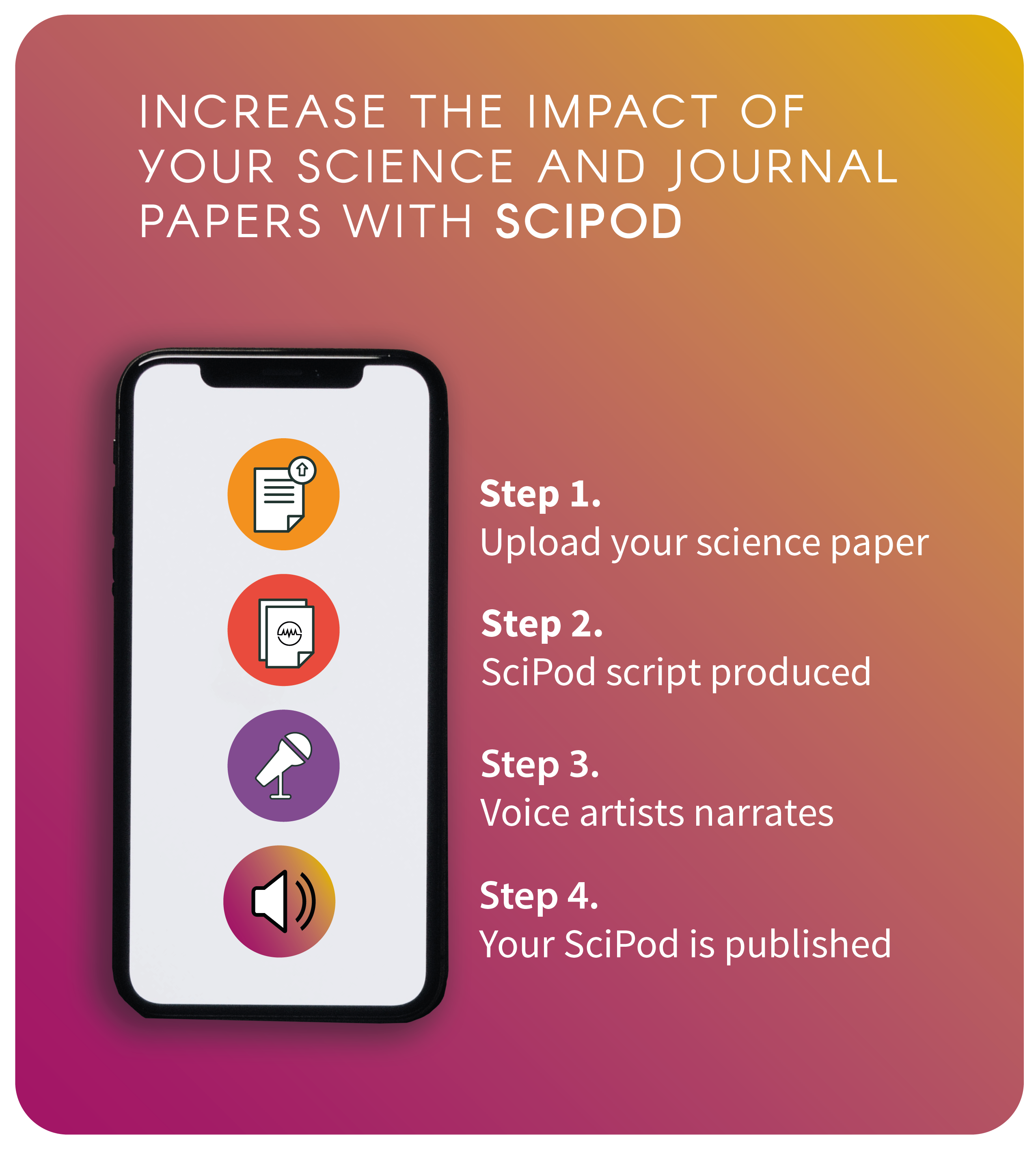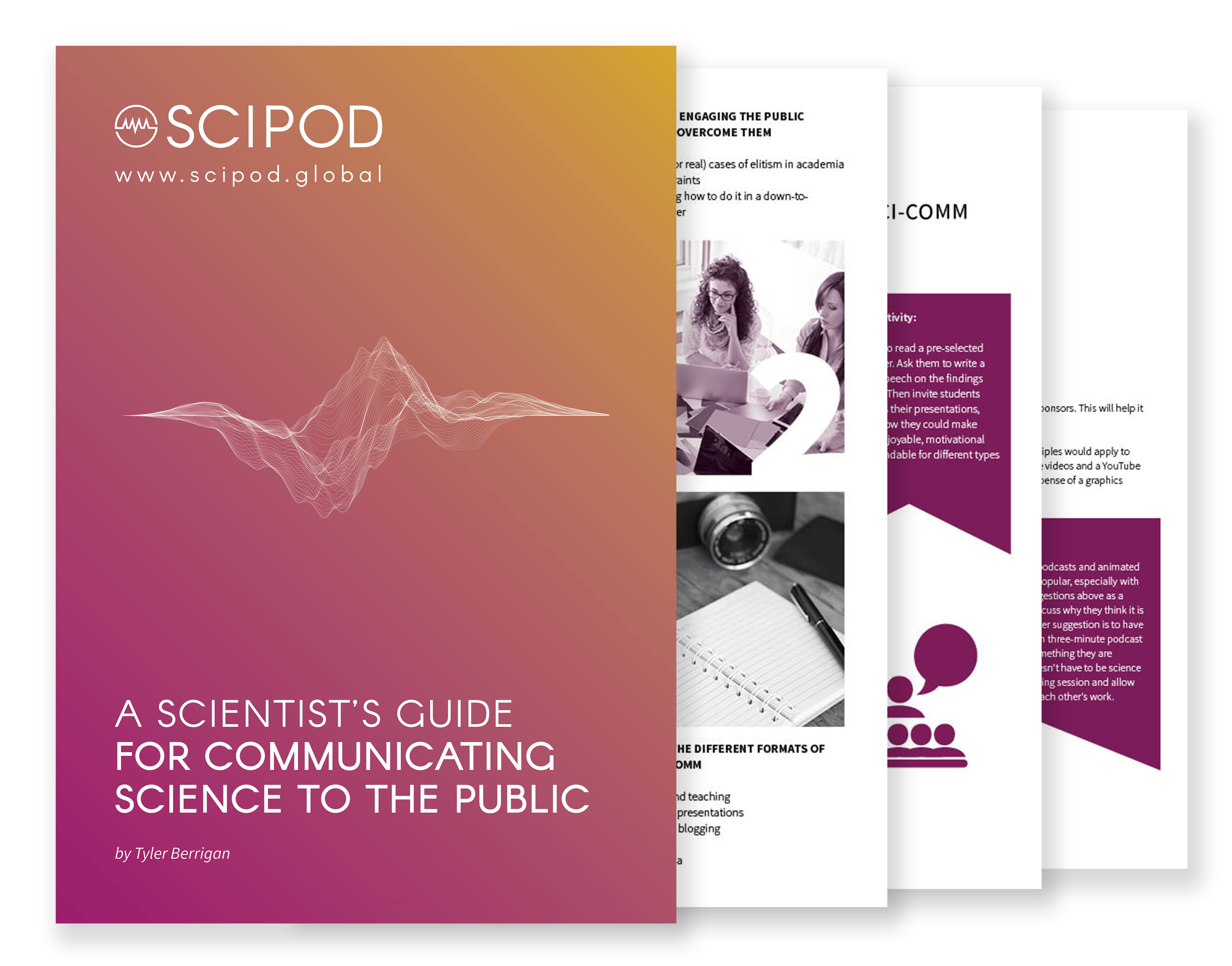Welcome to SciComm Radio
An exclusive interview series with leading scientists and science communicators
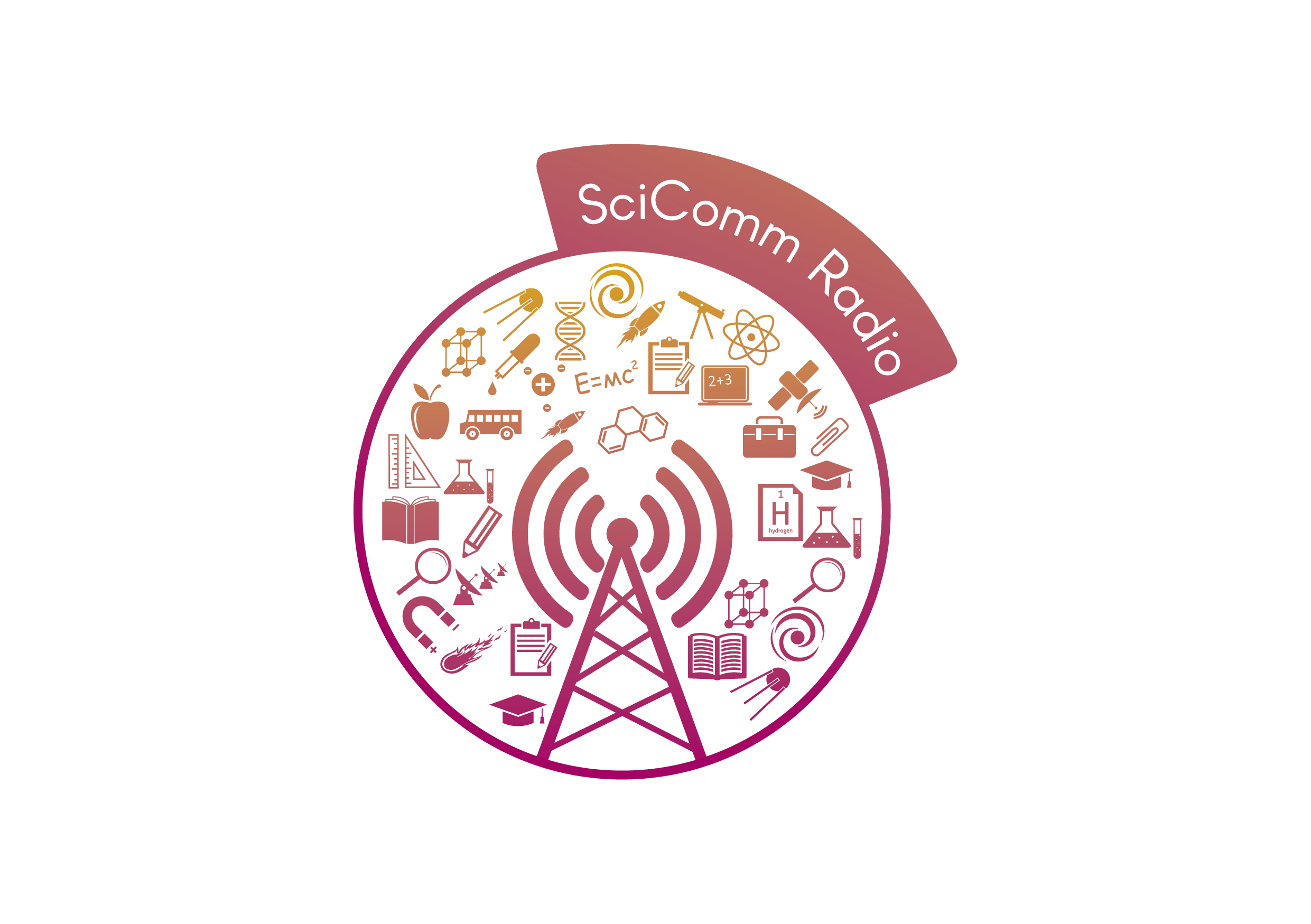
Click Below To Listen To A SciPod Radio Episode
Providing Effective Pest Management Education Through Animations – Dr Julia Bello-Bravo
Providing Effective Pest Management Education Through Animations – Dr Julia Bello-Bravo
Original Article Reference
This SciPod is a summary of the paper:
doi.org/10.1564/v29_apr_02
About this episode
Integrated pest management describes effective and environmentally sensitive approaches to controlling agricultural pests, which are based on combinations of different practices. Educational information on integrated pest management is much more accessible in the developed world than in developing countries. This is due to a combination of language and technology barriers around information sharing. To ensure that reliable content related to integrated pest management systems and other educational resources can also be widely accessed by people in developing countries, researchers at Michigan State University and Purdue University have created Scientific Animations Without Borders – or SAWBO – which provides scientifically accurate animations about various important topics.
This work is licensed under a Creative Commons Attribution 4.0 International License. 
What does this mean?
Share: You can copy and redistribute the material in any medium or format
Adapt: You can change, and build upon the material for any purpose, even commercially.
Credit: You must give appropriate credit, provide a link to the license, and indicate if changes were made.
More episodes
Increase the impact of your research
• Good science communication helps people make informed decisions and motivates them to take appropriate and affirmative action.
• Good science communication encourages everyday people to be scientifically literate so that they can analyse the integrity and legitimacy of information.
• Good science communication encourages people into STEM-related fields of study and employment.
• Good public science communication fosters a community around research that includes both members of the public, policymakers and scientists.
• In a recent survey, 75% of people suggested they would prefer to listen to an interesting story than read it.

Step 1 Upload your science paper
Step 2 SciPod script written
Step 3 Voice audio recorded
Step 4 SciPod published
Engineering the Path to New Semiconductors – Dr Yasuo Koide
Engineering the Path to New Semiconductors – Dr Yasuo Koide
Original Article Reference
This SciPod is a summary of the paper:
https://doi.org/10.33548/SCIENTIA759
About this episode
As fundamental components of our electronic and optical devices, semiconductors are essential to our modern way of life. Dr Yasuo Koide of the National Institute for Material Science in Japan has an extensive history of researching and developing these unique materials. Alongside his colleagues, Dr Koide continues to break through the boundaries of our existing knowledge to create new and exciting technologies.
This work is licensed under a Creative Commons Attribution 4.0 International License. 
What does this mean?
Share: You can copy and redistribute the material in any medium or format
Adapt: You can change, and build upon the material for any purpose, even commercially.
Credit: You must give appropriate credit, provide a link to the license, and indicate if changes were made.
More episodes
Increase the impact of your research
• Good science communication helps people make informed decisions and motivates them to take appropriate and affirmative action.
• Good science communication encourages everyday people to be scientifically literate so that they can analyse the integrity and legitimacy of information.
• Good science communication encourages people into STEM-related fields of study and employment.
• Good public science communication fosters a community around research that includes both members of the public, policymakers and scientists.
• In a recent survey, 75% of people suggested they would prefer to listen to an interesting story than read it.

Step 1 Upload your science paper
Step 2 SciPod script written
Step 3 Voice audio recorded
Step 4 SciPod published
Causality: A Fundamental Necessity or Part of the Problem?
Causality: A Fundamental Necessity or Part of the Problem?
Original Article Reference
This SciPod is a summary of the paper ‘Is Causality a Necessary Tool for Understanding Our Universe, or Is It a Part of the Problem?’, from Entropy. https://doi.org/10.3390/e23070886
About this episode
For thousands of years, the notion of a one-way flow of cause-and-effect has underpinned virtually every scientific theory. Yet Dr Martin Tamm at the University of Stockholm argues that this notion of ‘causality’ may be holding back our understanding of how the Universe really works. Through his research, he suggests an alternative approach, based around a mathematical construct named ‘probability space’. His ideas could ultimately lead to new solutions to problems that physicists have struggled with for decades.
This work is licensed under a Creative Commons Attribution 4.0 International License. 
What does this mean?
Share: You can copy and redistribute the material in any medium or format
Adapt: You can change, and build upon the material for any purpose, even commercially.
Credit: You must give appropriate credit, provide a link to the license, and indicate if changes were made.
More episodes
Increase the impact of your research
• Good science communication helps people make informed decisions and motivates them to take appropriate and affirmative action.
• Good science communication encourages everyday people to be scientifically literate so that they can analyse the integrity and legitimacy of information.
• Good science communication encourages people into STEM-related fields of study and employment.
• Good public science communication fosters a community around research that includes both members of the public, policymakers and scientists.
• In a recent survey, 75% of people suggested they would prefer to listen to an interesting story than read it.

Step 1 Upload your science paper
Step 2 SciPod script written
Step 3 Voice audio recorded
Step 4 SciPod published
Strategies and Tools for Studying Microglial-Mediated Synapse Elimination and Refinement
Strategies and Tools for Studying Microglial-Mediated Synapse Elimination and Refinement
Original Article Reference
This SciPod is a summary of the paper ‘Strategies and Tools for Studying Microglial-Mediated Synapse Elimination and Refinement’
Authored by ‘Raffaella Morini, Matteo Bizzotto, Fabio Perrucci, Fabia Filipello and Michela Matteoli’
Published in the open access journal Frontiers in Immunology. https://doi.org/10.3389/fimmu.2021.640937
About this episode
Synapse elimination is a tightly regulated process, and an aberrant number of synapses both during the early stages of development or later in aging, has been observed in several neurological conditions, including Alzheimer’s disease, schizophrenia or autism. Effective methodological approaches for investigating how supernumerary synapses and apoptotic material are removed from the brain are vital for understanding the underlying mechanisms, and this, in turn, may provide exciting avenues for the development of new treatments. Dr Morini, Dr Filipello and colleagues at Humanitas University and at Washington University in St Louis have recently published a review about the different strategies and tools available to study the role of microglia, the phagocytes of the brain, in neuronal and synaptic substrates phagocytosis.
This work is licensed under a Creative Commons Attribution 4.0 International License. 
What does this mean?
Share: You can copy and redistribute the material in any medium or format
Adapt: You can change, and build upon the material for any purpose, even commercially.
Credit: You must give appropriate credit, provide a link to the license, and indicate if changes were made.
More episodes
Increase the impact of your research
• Good science communication helps people make informed decisions and motivates them to take appropriate and affirmative action.
• Good science communication encourages everyday people to be scientifically literate so that they can analyse the integrity and legitimacy of information.
• Good science communication encourages people into STEM-related fields of study and employment.
• Good public science communication fosters a community around research that includes both members of the public, policymakers and scientists.
• In a recent survey, 75% of people suggested they would prefer to listen to an interesting story than read it.

Step 1 Upload your science paper
Step 2 SciPod script written
Step 3 Voice audio recorded
Step 4 SciPod published
Understanding Reionisation In The Early Universe – Dr Nick Gnedin
Understanding Reionisation In The Early Universe – Dr Nick Gnedin
Original Article Reference
This SciPod is a summary of the paper:
https://doi.org/10.33548/SCIENTIA659
About this episode
Hundreds of millions of years after the Big Bang, charged, ‘ionised’ particles not seen since the earliest ages of the universe began to re-emerge. Named ‘reionisation’, this event was crucially important in the history of our universe – but because it occurred so far back in the past, telescope observations can only offer astronomers limited clues about how it unfolded. In his research, Dr Nick Gnedin at the Fermi National Accelerator Laboratory uses advanced computer simulations to study reionisation. His team’s project, named ‘Cosmic Reionization On Computers’, or CROC, now offers a key resource to researchers studying this distant period.
This work is licensed under a Creative Commons Attribution 4.0 International License. 
What does this mean?
Share: You can copy and redistribute the material in any medium or format
Adapt: You can change, and build upon the material for any purpose, even commercially.
Credit: You must give appropriate credit, provide a link to the license, and indicate if changes were made.
More episodes
Increase the impact of your research
• Good science communication helps people make informed decisions and motivates them to take appropriate and affirmative action.
• Good science communication encourages everyday people to be scientifically literate so that they can analyse the integrity and legitimacy of information.
• Good science communication encourages people into STEM-related fields of study and employment.
• Good public science communication fosters a community around research that includes both members of the public, policymakers and scientists.
• In a recent survey, 75% of people suggested they would prefer to listen to an interesting story than read it.

Step 1 Upload your science paper
Step 2 SciPod script written
Step 3 Voice audio recorded
Step 4 SciPod published
Uncovering The Trigger For Mars’ Global Dust Storms – James H. Shirley
Uncovering The Trigger For Mars’ Global Dust Storms – James H. Shirley
Original Article Reference
This SciPod is a summary of the paper:
https://doi.org/10.33548/SCIENTIA635
About this episode
Enshrouding the Martian surface with thick clouds of dust, the Red Planet’s unique global dust storms have long mystified astronomers and planetary scientists. James Shirley, at NASA’s Jet Propulsion Laboratory, has shown through his research that the occurrence of these global storms is strongly linked to the changes in Mars’ motion about the gravitational centre of the solar system. Already boasting strong observational evidence, his results could not only improve our understanding of the Mars atmosphere – they may also lead to a better understanding of turbulent weather patterns on Earth.
This work is licensed under a Creative Commons Attribution 4.0 International License. 
What does this mean?
Share: You can copy and redistribute the material in any medium or format
Adapt: You can change, and build upon the material for any purpose, even commercially.
Credit: You must give appropriate credit, provide a link to the license, and indicate if changes were made.
More episodes
Increase the impact of your research
• Good science communication helps people make informed decisions and motivates them to take appropriate and affirmative action.
• Good science communication encourages everyday people to be scientifically literate so that they can analyse the integrity and legitimacy of information.
• Good science communication encourages people into STEM-related fields of study and employment.
• Good public science communication fosters a community around research that includes both members of the public, policymakers and scientists.
• In a recent survey, 75% of people suggested they would prefer to listen to an interesting story than read it.

Step 1 Upload your science paper
Step 2 SciPod script written
Step 3 Voice audio recorded
Step 4 SciPod published
The HBCU – HDI Women In STEM Conferences – Dr Sonya Smith
The HBCU – HDI Women In STEM Conferences – Dr Sonya Smith
Original Article Reference
This SciPod is a summary of the paper:
https://doi.org/10.33548/SCIENTIA577
About this episode
Although the number of women enrolling in science, technology, engineering and math (STEM) courses has increased over the past few years, women still remain widely underrepresented in STEM fields. To address this serious issue, the HBCU-HDI Women in STEM Conference, an event organised by Dr Sonya Smith and her colleagues at Howard University, brings female scientists and graduate students from the US and South Africa together to openly discuss the challenges and opportunities for women pursuing careers in STEM-related fields.
This work is licensed under a Creative Commons Attribution 4.0 International License. 
What does this mean?
Share: You can copy and redistribute the material in any medium or format
Adapt: You can change, and build upon the material for any purpose, even commercially.
Credit: You must give appropriate credit, provide a link to the license, and indicate if changes were made.
More episodes
Increase the impact of your research
• Good science communication helps people make informed decisions and motivates them to take appropriate and affirmative action.
• Good science communication encourages everyday people to be scientifically literate so that they can analyse the integrity and legitimacy of information.
• Good science communication encourages people into STEM-related fields of study and employment.
• Good public science communication fosters a community around research that includes both members of the public, policymakers and scientists.
• In a recent survey, 75% of people suggested they would prefer to listen to an interesting story than read it.

Step 1 Upload your science paper
Step 2 SciPod script written
Step 3 Voice audio recorded
Step 4 SciPod published
The Galapagos Initiative Saving The Enchanted Islands – Dr Stephen Walsh, University Of North Carolina At Chapel Hill
The Galapagos Initiative Saving The Enchanted Islands – Dr Stephen Walsh, University Of North Carolina At Chapel Hill
Original Article Reference
This SciPod is a summary of the paper:
https://doi.org/10.33548/SCIENTIA634
About this episode
The Galapagos Islands are facing increasing danger. Local and global forces – including tourism and climate change – threaten the fragile island ecosystems. The high number of unique plants and animals on the islands means that the loss of a Galapagos species may represent a global extinction event. The Galapagos Initiative, founded by Dr Stephen Walsh of the University of North Carolina at Chapel Hill and Dr Carlos Mena of the Universidad San Francisco de Quito, aims to save the Galapagos Islands with an innovative, sustainable strategy combining evidence from key interdisciplinary projects and a robust mapping and modelling program.
This work is licensed under a Creative Commons Attribution 4.0 International License. 
What does this mean?
Share: You can copy and redistribute the material in any medium or format
Adapt: You can change, and build upon the material for any purpose, even commercially.
Credit: You must give appropriate credit, provide a link to the license, and indicate if changes were made.
More episodes
Increase the impact of your research
• Good science communication helps people make informed decisions and motivates them to take appropriate and affirmative action.
• Good science communication encourages everyday people to be scientifically literate so that they can analyse the integrity and legitimacy of information.
• Good science communication encourages people into STEM-related fields of study and employment.
• Good public science communication fosters a community around research that includes both members of the public, policymakers and scientists.
• In a recent survey, 75% of people suggested they would prefer to listen to an interesting story than read it.

Step 1 Upload your science paper
Step 2 SciPod script written
Step 3 Voice audio recorded
Step 4 SciPod published
The Benefits Of A High – Protein Diet Across The Lifespan – Dr Jamie I. Baum, University Of Arkansas
The Benefits Of A High – Protein Diet Across The Lifespan – Dr Jamie I. Baum, University Of Arkansas
Original Article Reference
This SciPod is a summary of the paper:
https://doi.org/10.33548/SCIENTIA623
About this episode
Being overweight is a well-recognised risk factor for the development of chronic diseases such as diabetes, heart diseases, and certain types of cancer. As such, obesity represents a significant public health issue worldwide. It is the leading cause of death in the USA, notably in Arkansas, where Dr Jamie I. Baum, at the Department of Food Science at the University of Arkansas, is exploring, with her colleagues, the relationship between dietary protein intake and its impact on body composition and metabolism to develop efficient nutritional guidelines to prevent and treat obesity.
This work is licensed under a Creative Commons Attribution 4.0 International License. 
What does this mean?
Share: You can copy and redistribute the material in any medium or format
Adapt: You can change, and build upon the material for any purpose, even commercially.
Credit: You must give appropriate credit, provide a link to the license, and indicate if changes were made.
More episodes
Increase the impact of your research
• Good science communication helps people make informed decisions and motivates them to take appropriate and affirmative action.
• Good science communication encourages everyday people to be scientifically literate so that they can analyse the integrity and legitimacy of information.
• Good science communication encourages people into STEM-related fields of study and employment.
• Good public science communication fosters a community around research that includes both members of the public, policymakers and scientists.
• In a recent survey, 75% of people suggested they would prefer to listen to an interesting story than read it.

Step 1 Upload your science paper
Step 2 SciPod script written
Step 3 Voice audio recorded
Step 4 SciPod published
Superinsulators The Hideout Of Magnetic Monopoles
Superinsulators The Hideout Of Magnetic Monopoles
Original Article Reference
This SciPod is a summary of the paper:
https://doi.org/10.33548/SCIENTIA652
About this episode
Magnetic monopoles have long been dismissed as impossible by many physicists, but their existence has nonetheless been theorised for many decades. Through their extensive research, scientists at Terra Quantum AG, the University of Perugia, and SwissScientific Technologies, show that the end could soon be in sight for this conflict. The team’s investigations into superconducting materials not only show that magnetic monopoles must be real – their discoveries also set the stage for exciting technological advances.
This work is licensed under a Creative Commons Attribution 4.0 International License. 
What does this mean?
Share: You can copy and redistribute the material in any medium or format
Adapt: You can change, and build upon the material for any purpose, even commercially.
Credit: You must give appropriate credit, provide a link to the license, and indicate if changes were made.
More episodes
Increase the impact of your research
• Good science communication helps people make informed decisions and motivates them to take appropriate and affirmative action.
• Good science communication encourages everyday people to be scientifically literate so that they can analyse the integrity and legitimacy of information.
• Good science communication encourages people into STEM-related fields of study and employment.
• Good public science communication fosters a community around research that includes both members of the public, policymakers and scientists.
• In a recent survey, 75% of people suggested they would prefer to listen to an interesting story than read it.

Step 1 Upload your science paper
Step 2 SciPod script written
Step 3 Voice audio recorded
Step 4 SciPod published
Small But Mighty Game – Changing Nanopore Research – Dr Jean – Pierre Leburton, University Of Illinois At Urbana – Champaign
Small But Mighty Game – Changing Nanopore Research – Dr Jean – Pierre Leburton, University Of Illinois At Urbana – Champaign
Original Article Reference
This SciPod is a summary of the paper:
https://doi.org/10.33548/SCIENTIA654
About this episode
The far-reaching benefits of nanopore research encompass fields as diverse as physics, healthcare, big data processing and environmental studies. At the University of Illinois at Urbana-Champaign, Dr Jean-Pierre Leburton is conducting research focused on the use of nanopores in ultrathin solid-state molecular materials, such as graphene and 2D transition-metal dichalcogenides, for DNA sensing applications. This offers a low-cost and highly effective method of identifying biomolecules, and could have widespread medical applications, enabling rapid, early and effective disease diagnosis and prompting effective treatment, as well as providing invaluable technologies for assisting with DNA sequencing.
This work is licensed under a Creative Commons Attribution 4.0 International License. 
What does this mean?
Share: You can copy and redistribute the material in any medium or format
Adapt: You can change, and build upon the material for any purpose, even commercially.
Credit: You must give appropriate credit, provide a link to the license, and indicate if changes were made.
More episodes
Increase the impact of your research
• Good science communication helps people make informed decisions and motivates them to take appropriate and affirmative action.
• Good science communication encourages everyday people to be scientifically literate so that they can analyse the integrity and legitimacy of information.
• Good science communication encourages people into STEM-related fields of study and employment.
• Good public science communication fosters a community around research that includes both members of the public, policymakers and scientists.
• In a recent survey, 75% of people suggested they would prefer to listen to an interesting story than read it.

Step 1 Upload your science paper
Step 2 SciPod script written
Step 3 Voice audio recorded
Step 4 SciPod published
Simulating Flows Between Clustered Galaxies – Dr Tom Jones, University Of Minnesota
Simulating Flows Between Clustered Galaxies – Dr Tom Jones, University Of Minnesota
Original Article Reference
This SciPod is a summary of the paper:
https://doi.org/10.33548/SCIENTIA606
Share Episode
About this episode
The spaces in between galaxies may be unimaginably vast, but within galactic clusters, they are far from empty. Rather, these expanses are home to a wide range of interplaying, often violent plasma dynamics. In his research, Dr Tom Jones at the University of Minnesota plans to use cutting-edge computer techniques to simulate these processes – shedding new light on physical properties that have eluded astronomers so far. His team’s research will not only give crucial insights into some of the largest structures in the known universe, but will also capture the public imagination, and inspire a diverse new generation of astronomers.
This work is licensed under a Creative Commons Attribution 4.0 International License. 
What does this mean?
Share: You can copy and redistribute the material in any medium or format
Adapt: You can change, and build upon the material for any purpose, even commercially.
Credit: You must give appropriate credit, provide a link to the license, and indicate if changes were made.
More episodes
Increase the impact of your research
• Good science communication helps people make informed decisions and motivates them to take appropriate and affirmative action.
• Good science communication encourages everyday people to be scientifically literate so that they can analyse the integrity and legitimacy of information.
• Good science communication encourages people into STEM-related fields of study and employment.
• Good public science communication fosters a community around research that includes both members of the public, policymakers and scientists.
• In a recent survey, 75% of people suggested they would prefer to listen to an interesting story than read it.

Step 1 Upload your science paper
Step 2 SciPod script written
Step 3 Voice audio recorded
Step 4 SciPod published
Regenerative Agriculture Putting The Heart And Soul Back In Farming – Dr Hannah Gosnell, Oregon State University
Regenerative Agriculture Putting The Heart And Soul Back In Farming – Dr Hannah Gosnell, Oregon State University
Original Article Reference
This SciPod is a summary of the paper:
https://doi.org/10.33548/SCIENTIA606
Share Episode
About this episode
Modern industrial agriculture has helped farmers meet rising food demands, but these practices are contributing to a range of environmental problems. Regenerative agriculture holds promising solutions that could help to restore and maintain healthy ecosystems and contribute to climate change mitigation, while keeping pace with food demands and enhancing farmers’ resilience to environmental stressors. Through her research, Dr Hannah Gosnell aims to understand what motivates cattle and sheep farmers – also known as ranchers – to adopt and sustain the use of regenerative practices and what challenges must be navigated. Her work is informing efforts that encourage farmers to transition to these methods.
This work is licensed under a Creative Commons Attribution 4.0 International License. 
What does this mean?
Share: You can copy and redistribute the material in any medium or format
Adapt: You can change, and build upon the material for any purpose, even commercially.
Credit: You must give appropriate credit, provide a link to the license, and indicate if changes were made.
More episodes
Increase the impact of your research
• Good science communication helps people make informed decisions and motivates them to take appropriate and affirmative action.
• Good science communication encourages everyday people to be scientifically literate so that they can analyse the integrity and legitimacy of information.
• Good science communication encourages people into STEM-related fields of study and employment.
• Good public science communication fosters a community around research that includes both members of the public, policymakers and scientists.
• In a recent survey, 75% of people suggested they would prefer to listen to an interesting story than read it.

Step 1 Upload your science paper
Step 2 SciPod script written
Step 3 Voice audio recorded
Step 4 SciPod published
Optimising Carbon – Hydrogen Bond Activation For Efficient Organic Synthesis – Dr Oscar Verho, Uppsala University
Optimising Carbon – Hydrogen Bond Activation For Efficient Organic Synthesis – Dr Oscar Verho, Uppsala University
Original Article Reference
This SciPod is a summary of the paper:
https://doi.org/10.33548/SCIENTIA647
Share Episode
About this episode
Choosing which drug molecule to build is only one part of pharmaceutical research; medicinal chemists also need to know how to synthesise drug molecules in an efficient and cost-effective manner. Dr Oscar Verho and his team at Uppsala University in Sweden have made significant progress in this area and are aiming to reduce the time and resources needed to make drug compounds. The team is researching methods to ‘activate’ the carbon-hydrogen bonds that are commonly found in organic molecules to ultimately shorten the synthetic route to the required compound.
This work is licensed under a Creative Commons Attribution 4.0 International License. 
What does this mean?
Share: You can copy and redistribute the material in any medium or format
Adapt: You can change, and build upon the material for any purpose, even commercially.
Credit: You must give appropriate credit, provide a link to the license, and indicate if changes were made.
More episodes
Increase the impact of your research
• Good science communication helps people make informed decisions and motivates them to take appropriate and affirmative action.
• Good science communication encourages everyday people to be scientifically literate so that they can analyse the integrity and legitimacy of information.
• Good science communication encourages people into STEM-related fields of study and employment.
• Good public science communication fosters a community around research that includes both members of the public, policymakers and scientists.
• In a recent survey, 75% of people suggested they would prefer to listen to an interesting story than read it.

Step 1 Upload your science paper
Step 2 SciPod script written
Step 3 Voice audio recorded
Step 4 SciPod published
Exploring the Evolution of Learning Fuelled by Mobile Technology – Dr Julia Bello Bravo, Purdue University
Exploring the Evolution of Learning Fuelled by Mobile Technology – Dr Julia Bello Bravo, Purdue University
Original Article Reference
This SciPod is a summary of the paper ‘Breaking out: the turning point in learning using mobile technology’, from Heliyon. doi.org/10.1016/j.heliyon.2021.e06595
About this episode
Research investigating the adoption of new technologies can help to unveil global trends in learning and education. Researchers at Michigan State University, University of Illinois Urbana Champaign, Texas State University and Purdue University have recently carried out a study investigating the use of devices by people in different parts of the world and with various literacy levels to access YouTube videos between 2013 and 2018. Their analyses identified key historical moments when the use of smartphones for online learning surpassed that of other information and communication technologies.
This work is licensed under a Creative Commons Attribution 4.0 International License. 
What does this mean?
Share: You can copy and redistribute the material in any medium or format
Adapt: You can change, and build upon the material for any purpose, even commercially.
Credit: You must give appropriate credit, provide a link to the license, and indicate if changes were made.
More episodes
Increase the impact of your research
• Good science communication helps people make informed decisions and motivates them to take appropriate and affirmative action.
• Good science communication encourages everyday people to be scientifically literate so that they can analyse the integrity and legitimacy of information.
• Good science communication encourages people into STEM-related fields of study and employment.
• Good public science communication fosters a community around research that includes both members of the public, policymakers and scientists.
• In a recent survey, 75% of people suggested they would prefer to listen to an interesting story than read it.

Step 1 Upload your science paper
Step 2 SciPod script written
Step 3 Voice audio recorded
Step 4 SciPod published
Exploring the Potential of Mobile Learning for Farmers in Remote Regions – Dr Julia Bello-Bravo, Purdue University
Exploring the Potential of Mobile Learning for Farmers in Remote Regions – Dr Julia Bello-Bravo, Purdue University
Original Article Reference
This SciPod is a summary of the paper ‘An 89% solution adoption rate at a two-year follow up: evaluating the effectiveness of an animated agricultural video approach’ from Information Technology for Development. doi.org/10.1080/02681102.2019.1697632
About this episode
Despite advances in agricultural science, communicating best practices to farmers in remote areas remains difficult. Although mobile learning tools, such as animated videos, have the potential to effectively present new information to diverse, isolated audiences, their long-term efficacy is poorly understood. A team of researchers from the Agricultural Research Institute of Mozambique, Michigan State University and Iowa State University followed up with farmers in Mozambique two years after receiving video-based, mobile instruction. Their findings suggest these methods are just as successful as in-person teaching styles in improving farmers’ ability to retain and use new information.
This work is licensed under a Creative Commons Attribution 4.0 International License. 
What does this mean?
Share: You can copy and redistribute the material in any medium or format
Adapt: You can change, and build upon the material for any purpose, even commercially.
Credit: You must give appropriate credit, provide a link to the license, and indicate if changes were made.
More episodes
Increase the impact of your research
• Good science communication helps people make informed decisions and motivates them to take appropriate and affirmative action.
• Good science communication encourages everyday people to be scientifically literate so that they can analyse the integrity and legitimacy of information.
• Good science communication encourages people into STEM-related fields of study and employment.
• Good public science communication fosters a community around research that includes both members of the public, policymakers and scientists.
• In a recent survey, 75% of people suggested they would prefer to listen to an interesting story than read it.

Step 1 Upload your science paper
Step 2 SciPod script written
Step 3 Voice audio recorded
Step 4 SciPod published
Investigating the Effect of Vitamin C on the Evolution of Insecticide Resistance – Dr Barry Pittendrigh, Purdue University
Investigating the Effect of Vitamin C on the Evolution of Insecticide Resistance – Dr Barry Pittendrigh, Purdue University
Original Article Reference
This SciPod is a summary of the paper ‘Dietary antioxidant vitamin C influences the evolutionary path of insecticide resistance in Drosophila melanogaster’, published in the journal Pesticide Biochemistry and Physiology. doi.org/10.1016/j.pestbp.2020.104631
About this episode
Dietary antioxidants, such as vitamin C, are known to reduce the negative effects of toxins in mammals by preventing cellular damage caused by reactive oxygen species. However, it is not known whether these antioxidants have a similar protective effect in insects. A team led by Dr Barry Pittendrigh at Purdue University have investigated the adaptive responses of fruit flies to insecticide exposure in the presence of vitamin C. Their work has exciting implications for reducing the threat of insecticide resistance in insect pests.
This work is licensed under a Creative Commons Attribution 4.0 International License. 
What does this mean?
Share: You can copy and redistribute the material in any medium or format
Adapt: You can change, and build upon the material for any purpose, even commercially.
Credit: You must give appropriate credit, provide a link to the license, and indicate if changes were made.
More episodes
Increase the impact of your research
• Good science communication helps people make informed decisions and motivates them to take appropriate and affirmative action.
• Good science communication encourages everyday people to be scientifically literate so that they can analyse the integrity and legitimacy of information.
• Good science communication encourages people into STEM-related fields of study and employment.
• Good public science communication fosters a community around research that includes both members of the public, policymakers and scientists.
• In a recent survey, 75% of people suggested they would prefer to listen to an interesting story than read it.

Step 1 Upload your science paper
Step 2 SciPod script written
Step 3 Voice audio recorded
Step 4 SciPod published
Identifying an Achilles’ Heel in Insecticide Resistance – Dr Barry Pittendrigh, Purdue University
Identifying an Achilles’ Heel in Insecticide Resistance – Dr Barry Pittendrigh, Purdue University
Original Article Reference
This SciPod is a summary of the paper ‘The insulin signalling pathway in Drosophila melanogaster. A nexus revealing an “Achilles’ heel” in DDT resistance’, published in Pesticide Biochemistry and Physiology. doi.org/10.1016/j.pestbp.2020.104727
About this episode
Insecticide resistance is an ongoing challenge for agriculture and the control of insect-transmitted diseases. In a recent study at Purdue University, a team of scientists led by Dr Barry Pittendrigh identified a potential chink in the armour of insecticide resistance in fruit flies. If this Achilles’ heel can be exploited, it bodes well for the future control of destructive insects.
This work is licensed under a Creative Commons Attribution 4.0 International License. 
What does this mean?
Share: You can copy and redistribute the material in any medium or format
Adapt: You can change, and build upon the material for any purpose, even commercially.
Credit: You must give appropriate credit, provide a link to the license, and indicate if changes were made.
More episodes
Increase the impact of your research
• Good science communication helps people make informed decisions and motivates them to take appropriate and affirmative action.
• Good science communication encourages everyday people to be scientifically literate so that they can analyse the integrity and legitimacy of information.
• Good science communication encourages people into STEM-related fields of study and employment.
• Good public science communication fosters a community around research that includes both members of the public, policymakers and scientists.
• In a recent survey, 75% of people suggested they would prefer to listen to an interesting story than read it.

Step 1 Upload your science paper
Step 2 SciPod script written
Step 3 Voice audio recorded
Step 4 SciPod published
Neurodevelopmental Disorders Arising From Histone Methylation Malfunctions – Dr Shigeki Iwase, University Of Michigan
Neurodevelopmental Disorders Arising From Histone Methylation Malfunctions – Dr Shigeki Iwase, University Of Michigan
Original Article Reference
This SciPod is a summary of the paper:
https://doi.org/10.33548/SCIENTIA643
Share Episode
About this episode
Neurodevelopmental disorders range from those on the relatively common autism spectrum to much rarer disorders such as KDM5C-disorder and Weidemann-Steiner Syndrome. Exciting advancements in human genetics have shown that histones – the proteins our DNA wraps around – play a vital role in healthy brain development. Dr Shigeki Iwase from the University of Michigan studies how mutations in the enzymes that regulate histone structure and function can cause cognitive disorders. His work has led to important new discoveries, including how counterpart enzymes can be utilised for therapies.
This work is licensed under a Creative Commons Attribution 4.0 International License. 
What does this mean?
Share: You can copy and redistribute the material in any medium or format
Adapt: You can change, and build upon the material for any purpose, even commercially.
Credit: You must give appropriate credit, provide a link to the license, and indicate if changes were made.
More episodes
Increase the impact of your research
• Good science communication helps people make informed decisions and motivates them to take appropriate and affirmative action.
• Good science communication encourages everyday people to be scientifically literate so that they can analyse the integrity and legitimacy of information.
• Good science communication encourages people into STEM-related fields of study and employment.
• Good public science communication fosters a community around research that includes both members of the public, policymakers and scientists.
• In a recent survey, 75% of people suggested they would prefer to listen to an interesting story than read it.

Step 1 Upload your science paper
Step 2 SciPod script written
Step 3 Voice audio recorded
Step 4 SciPod published
Mapping Brain Networks To Understand Epilepsy – Dr Victoria Morgan, Vanderbilt University Medical Center
Mapping Brain Networks To Understand Epilepsy – Dr Victoria Morgan, Vanderbilt University Medical Center
Original Article Reference
This SciPod is a summary of the paper:
https://doi.org/10.33548/SCIENTIA610
Share Episode
About this episode
Epilepsy is one of the most common causes of disability worldwide, but for many patients, treatment fails to be effective. Dr Victoria Morgan and her team from the Department of Radiology and Radiological Sciences at Vanderbilt University Medical Center are using functional connectivity mapping to find out why some patients respond better to treatment and what alternative ways there may be to tackle this debilitating disorder.
This work is licensed under a Creative Commons Attribution 4.0 International License. 
What does this mean?
Share: You can copy and redistribute the material in any medium or format
Adapt: You can change, and build upon the material for any purpose, even commercially.
Credit: You must give appropriate credit, provide a link to the license, and indicate if changes were made.
More episodes
Increase the impact of your research
• Good science communication helps people make informed decisions and motivates them to take appropriate and affirmative action.
• Good science communication encourages everyday people to be scientifically literate so that they can analyse the integrity and legitimacy of information.
• Good science communication encourages people into STEM-related fields of study and employment.
• Good public science communication fosters a community around research that includes both members of the public, policymakers and scientists.
• In a recent survey, 75% of people suggested they would prefer to listen to an interesting story than read it.

Step 1 Upload your science paper
Step 2 SciPod script written
Step 3 Voice audio recorded
Step 4 SciPod published
Improving Patient Outcomes In Traumatic Brain Injury – Dr Jack Jallo, Thomas Jefferson University
Improving Patient Outcomes In Traumatic Brain Injury – Dr Jack Jallo, Thomas Jefferson University
Original Article Reference
This SciPod is a summary of the paper:
https://doi.org/10.33548/SCIENTIA619
Share Episode
About this episode
Severe traumatic brain injury (TBI) is associated with high rates of disability and even mortality. Understanding the relationship between patient outcomes and the treatment received, as well as other physiological factors such as inflammation, can improve how we approach TBI. Dr Jack Jallo and his team from the Department of Neurological Surgery at Thomas Jefferson University are researching the factors that influence TBI recovery to help design better care management protocols and optimise patient recovery.
This work is licensed under a Creative Commons Attribution 4.0 International License. 
What does this mean?
Share: You can copy and redistribute the material in any medium or format
Adapt: You can change, and build upon the material for any purpose, even commercially.
Credit: You must give appropriate credit, provide a link to the license, and indicate if changes were made.
More episodes
Increase the impact of your research
• Good science communication helps people make informed decisions and motivates them to take appropriate and affirmative action.
• Good science communication encourages everyday people to be scientifically literate so that they can analyse the integrity and legitimacy of information.
• Good science communication encourages people into STEM-related fields of study and employment.
• Good public science communication fosters a community around research that includes both members of the public, policymakers and scientists.
• In a recent survey, 75% of people suggested they would prefer to listen to an interesting story than read it.

Step 1 Upload your science paper
Step 2 SciPod script written
Step 3 Voice audio recorded
Step 4 SciPod published
Improving Biodiversity Monitoring Today For Better Conservation Tomorrow – Dr Marta Jarzyna, The Ohio State University
Improving Biodiversity Monitoring Today For Better Conservation Tomorrow – Dr Marta Jarzyna, The Ohio State University
Original Article Reference
This SciPod is a summary of the paper:
Share Episode
About this episode
Chlamydia pneumoniae (or Cp for short) is a respiratory bacterium that causes treatable lung infections in humans and has been linked to the development of asthma. In a recent study, Dr David L. Hahn at St Mary’s Hospital in Madison, Wisconsin, USA, conducted a systematic review and meta-analysis of the available published data on the frequency and impact of Cp infection in child and adult asthma patients, and considered the potential implications for treatment.
This work is licensed under a Creative Commons Attribution 4.0 International License. 
What does this mean?
Share: You can copy and redistribute the material in any medium or format
Adapt: You can change, and build upon the material for any purpose, even commercially.
Credit: You must give appropriate credit, provide a link to the license, and indicate if changes were made.
More episodes
Increase the impact of your research
• Good science communication helps people make informed decisions and motivates them to take appropriate and affirmative action.
• Good science communication encourages everyday people to be scientifically literate so that they can analyse the integrity and legitimacy of information.
• Good science communication encourages people into STEM-related fields of study and employment.
• Good public science communication fosters a community around research that includes both members of the public, policymakers and scientists.
• In a recent survey, 75% of people suggested they would prefer to listen to an interesting story than read it.

Step 1 Upload your science paper
Step 2 SciPod script written
Step 3 Voice audio recorded
Step 4 SciPod published
The Frequency and Impact of Chlamydia Pneumoniae Infection in Chronic Asthma Patients – Dr David L. Hahn
The Frequency and Impact of Chlamydia Pneumoniae Infection in Chronic Asthma Patients – Dr David L. Hahn
Original Article Reference
This SciPod is a summary of the paper ‘Chlamydia pneumoniae and chronic asthma: Updated systematic review and meta-analysis of population attributable risk’, published in the open access journal PLoS ONE.
https://journals.plos.org/plosone/article?id=10.1371/journal.pone.0250034
Share Episode
About this episode
Chlamydia pneumoniae (or Cp for short) is a respiratory bacterium that causes treatable lung infections in humans and has been linked to the development of asthma. In a recent study, Dr David L. Hahn at St Mary’s Hospital in Madison, Wisconsin, USA, conducted a systematic review and meta-analysis of the available published data on the frequency and impact of Cp infection in child and adult asthma patients, and considered the potential implications for treatment.
This work is licensed under a Creative Commons Attribution 4.0 International License. 
What does this mean?
Share: You can copy and redistribute the material in any medium or format
Adapt: You can change, and build upon the material for any purpose, even commercially.
Credit: You must give appropriate credit, provide a link to the license, and indicate if changes were made.
More episodes
Increase the impact of your research
• Good science communication helps people make informed decisions and motivates them to take appropriate and affirmative action.
• Good science communication encourages everyday people to be scientifically literate so that they can analyse the integrity and legitimacy of information.
• Good science communication encourages people into STEM-related fields of study and employment.
• Good public science communication fosters a community around research that includes both members of the public, policymakers and scientists.
• In a recent survey, 75% of people suggested they would prefer to listen to an interesting story than read it.

Step 1 Upload your science paper
Step 2 SciPod script written
Step 3 Voice audio recorded
Step 4 SciPod published
Exposure to Commonly Used Pesticides May Harm Health – Professor Kathleen Susman
Exposure to Commonly Used Pesticides May Harm Health – Professor Kathleen Susman
Original Article Reference
This SciPod is a summary of the paper:
‘Neonicotinoid-containing insecticide disruption of growth, locomotion, and fertility in Caenorhabditis elegans’ from PLOS One https://doi.org/10.1371/journal.pone.0238637
Share Episode
About this episode
Conventional agricultural practices have greatly increased the yield and efficiency of modern farming, allowing us to better feed a growing population. To protect crops from pests and disease, we rely heavily on chemical pesticides. However, the impacts of pesticide use are not localised to plants – there is growing awareness that pesticides can negatively affect many other organisms, including humans. Professor Kathleen Susman of Vassar College in New York, along with her colleagues, assessed whether a commonly used class of pesticides, neonicotinoids, have the potential to cause damaging effects in non-target organisms. Her findings also have implications for human health.
This work is licensed under a Creative Commons Attribution 4.0 International License. 
What does this mean?
Share: You can copy and redistribute the material in any medium or format
Adapt: You can change, and build upon the material for any purpose, even commercially.
Credit: You must give appropriate credit, provide a link to the license, and indicate if changes were made.
More episodes
Increase the impact of your research
• Good science communication helps people make informed decisions and motivates them to take appropriate and affirmative action.
• Good science communication encourages everyday people to be scientifically literate so that they can analyse the integrity and legitimacy of information.
• Good science communication encourages people into STEM-related fields of study and employment.
• Good public science communication fosters a community around research that includes both members of the public, policymakers and scientists.
• In a recent survey, 75% of people suggested they would prefer to listen to an interesting story than read it.

Step 1 Upload your science paper
Step 2 SciPod script written
Step 3 Voice audio recorded
Step 4 SciPod published
A Statistical Approach to the Reproducibility Crisis
A Statistical Approach to the Reproducibility Crisis
Original Article Reference
This SciPod is a summary of the paper:
‘Factoring a 2 x 2 contingency table’, from PLOS one. doi.org/10.1371/journal.pone.0224460
Share Episode
Watch to learn more
About this episode
Many fields of experimental research are now facing a daunting challenge: despite the fact that separate research teams may work on the same system, the end results of their experiments can be widely varied. In his research, Dr Stanley Luck, at the Science, Technology and Research Institute of Delaware, explores the reasons behind this inherent inability to reproduce experimental results. Based on his analysis, he now suggests two key requirements that must be met to overcome this crisis, which could have a profound influence over the techniques employed by experimental researchers in the future.
More episodes
This work is licensed under a Creative Commons Attribution 4.0 International License. 
What does this mean?
Share: You can copy and redistribute the material in any medium or format
Adapt: You can change, and build upon the material for any purpose, even commercially.
Credit: You must give appropriate credit, provide a link to the license, and indicate if changes were made.
Increase the impact of your research
• Good science communication helps people make informed decisions and motivates them to take appropriate and affirmative action.
• Good science communication encourages everyday people to be scientifically literate so that they can analyse the integrity and legitimacy of information.
• Good science communication encourages people into STEM-related fields of study and employment.
• Good public science communication fosters a community around research that includes members of the public, policymakers and scientists.
• In a recent survey, 75% of people suggested they would prefer to listen to an interesting story than read it.

Step 1 Upload your science paper
Step 2 SciPod script written
Step 3 Voice audio recorded
Step 4 SciPod published
Illuminating New Insights Into Lightning Initiation Through Interferometry -Dr Xuan – Min Shao, Los Alamos National Laboratory
Illuminating New Insights Into Lightning Initiation Through Interferometry -Dr Xuan – Min Shao, Los Alamos National Laboratory
Original Article Reference
This SciPod is a summary of the paper:
https://doi.org/10.33548/SCIENTIA604
Share Episode
About this episode
Radio frequency inteferometric lightning maps are important tools for researchers exploring the electrical processes that unfold within storm clouds. Dr Xuan-Min Shao and colleagues at Los Alamos National Laboratory in New Mexico, who first introduced broadband interferometry to lightning research over two decades ago, have now developed an advanced ‘beam steering’ interferometry technique to significantly improve the accuracy of lightning mapping. This approach, together with their recently developed polarisation detection technique, has begun to reveal new physics involved in lightning discharges. Their recent work shows how lightning initiation, which has been poorly understood until now, may be linked to high-energy cosmic particles entering Earth’s atmosphere.
This work is licensed under a Creative Commons Attribution 4.0 International License. 
What does this mean?
Share: You can copy and redistribute the material in any medium or format
Adapt: You can change, and build upon the material for any purpose, even commercially.
Credit: You must give appropriate credit, provide a link to the license, and indicate if changes were made.
More episodes
Increase the impact of your research
• Good science communication helps people make informed decisions and motivates them to take appropriate and affirmative action.
• Good science communication encourages everyday people to be scientifically literate so that they can analyse the integrity and legitimacy of information.
• Good science communication encourages people into STEM-related fields of study and employment.
• Good public science communication fosters a community around research that includes both members of the public, policymakers and scientists.
• In a recent survey, 75% of people suggested they would prefer to listen to an interesting story than read it.

Step 1 Upload your science paper
Step 2 SciPod script written
Step 3 Voice audio recorded
Step 4 SciPod published
Humanitarian Engineering Training Engineers To Best Serve Communities – Colorado School Of Mines
Humanitarian Engineering Training Engineers To Best Serve Communities – Colorado School Of Mines
Original Article Reference
This SciPod is a summary of the paper:
https://doi.org/10.33548/SCIENTIA584
Share Episode
About this episode
Engineering is one of the most impactful and transformative fields of teaching, research, and practice, as it shapes the world we live in and ensures the functioning of many systems that maintain human life. The Colorado School of Mines created the first Humanitarian Engineering (HE) program to train engineering students to devise solutions that are efficient, ethical, socially responsible and sustainable. Its students work closely with the communities they serve, thinking critically about their needs.
This work is licensed under a Creative Commons Attribution 4.0 International License. 
What does this mean?
Share: You can copy and redistribute the material in any medium or format
Adapt: You can change, and build upon the material for any purpose, even commercially.
Credit: You must give appropriate credit, provide a link to the license, and indicate if changes were made.
More episodes
Increase the impact of your research
• Good science communication helps people make informed decisions and motivates them to take appropriate and affirmative action.
• Good science communication encourages everyday people to be scientifically literate so that they can analyse the integrity and legitimacy of information.
• Good science communication encourages people into STEM-related fields of study and employment.
• Good public science communication fosters a community around research that includes both members of the public, policymakers and scientists.
• In a recent survey, 75% of people suggested they would prefer to listen to an interesting story than read it.

Step 1 Upload your science paper
Step 2 SciPod script written
Step 3 Voice audio recorded
Step 4 SciPod published
Hookah Smoking Understanding User Perceptions And Health Risks -Professor Mary Rezk – Hanna, University Of California
Hookah Smoking Understanding User Perceptions And Health Risks -Professor Mary Rezk – Hanna, University Of California
Original Article Reference
This SciPod is a summary of the paper:
https://doi.org/10.33548/SCIENTIA647
Share Episode
About this episode
Hookah smoking is the least regulated tobacco form. It is rapidly gaining in popularity to the extent that we are now facing a contemporary epidemic of tobacco abuse. Of particular concern is the level of usage among youth and young adults. Professor Mary Rezk-Hanna from the University of California, Los Angeles works with a group of scientists who aim to drive policy regulation of tobacco and alternative tobacco products, including hookah smoking, by investigating their health effects on the cardiovascular system.
This work is licensed under a Creative Commons Attribution 4.0 International License. 
What does this mean?
Share: You can copy and redistribute the material in any medium or format
Adapt: You can change, and build upon the material for any purpose, even commercially.
Credit: You must give appropriate credit, provide a link to the license, and indicate if changes were made.
More episodes
Increase the impact of your research
• Good science communication helps people make informed decisions and motivates them to take appropriate and affirmative action.
• Good science communication encourages everyday people to be scientifically literate so that they can analyse the integrity and legitimacy of information.
• Good science communication encourages people into STEM-related fields of study and employment.
• Good public science communication fosters a community around research that includes both members of the public, policymakers and scientists.
• In a recent survey, 75% of people suggested they would prefer to listen to an interesting story than read it.

Step 1 Upload your science paper
Step 2 SciPod script written
Step 3 Voice audio recorded
Step 4 SciPod published
Herbivore Helpers Using Livestock To Manage Rangelands – Dr John Walker, Texas A&M University
Herbivore Helpers Using Livestock To Manage Rangelands – Dr John Walker, Texas A&M University
Original Article Reference
This SciPod is a summary of the paper:
https://doi.org/10.33548/SCIENTIA637
Share Episode
About this episode
Domestic herbivores – such as cattle, sheep, and goats – are remarkably important to ecosystems. Their feeding behaviours aid the management of natural habitats by preventing any individual plant species dominating the landscape. Thus, understanding livestock dietary preferences is vital for informing land management decisions. Dr John Walker from the Texas A&M AgriLife Research and Extension Center has devoted his career to exploring livestock dietary preferences, and how they can be manipulated to benefit rangelands. His ‘Aggie Cedar Eater’ (ACE) goats are now helping to control invasive juniper shrubs across the Great Plains of the US.
This work is licensed under a Creative Commons Attribution 4.0 International License. 
What does this mean?
Share: You can copy and redistribute the material in any medium or format
Adapt: You can change, and build upon the material for any purpose, even commercially.
Credit: You must give appropriate credit, provide a link to the license, and indicate if changes were made.
More episodes
Increase the impact of your research
• Good science communication helps people make informed decisions and motivates them to take appropriate and affirmative action.
• Good science communication encourages everyday people to be scientifically literate so that they can analyse the integrity and legitimacy of information.
• Good science communication encourages people into STEM-related fields of study and employment.
• Good public science communication fosters a community around research that includes both members of the public, policymakers and scientists.
• In a recent survey, 75% of people suggested they would prefer to listen to an interesting story than read it.

Step 1 Upload your science paper
Step 2 SciPod script written
Step 3 Voice audio recorded
Step 4 SciPod published
Glycomimetic Peptides As Immune System Activators In The Treatment Of Cancer And Viral Infections – Susavion Biosciences
Glycomimetic Peptides As Immune System Activators In The Treatment Of Cancer And Viral Infections – Susavion Biosciences
Original Article Reference
This SciPod is a summary of the paper:
https://doi.org/10.33548/SCIENTIA620
Share Episode
About this episode
Immune system cells express a number of receptors that bind to sugar ligands. This binding initiates the activation of T-cell lymphocytes and natural killer cells. Dr J. Kenneth Hoober, Dr Laura L. Eggink and the team at Susavion have designed peptides that bind to different receptors on immune cells. The peptides effectively extend the lives of mice with glioblastoma and ovarian cancer, and prevent the replication of viruses in the presence of non-neutralising antibodies. The mechanism of action of their peptides could inspire the development of effective treatments for Covid-19 and other viral infections.
This work is licensed under a Creative Commons Attribution 4.0 International License. 
What does this mean?
Share: You can copy and redistribute the material in any medium or format
Adapt: You can change, and build upon the material for any purpose, even commercially.
Credit: You must give appropriate credit, provide a link to the license, and indicate if changes were made.
More episodes
Increase the impact of your research
• Good science communication helps people make informed decisions and motivates them to take appropriate and affirmative action.
• Good science communication encourages everyday people to be scientifically literate so that they can analyse the integrity and legitimacy of information.
• Good science communication encourages people into STEM-related fields of study and employment.
• Good public science communication fosters a community around research that includes both members of the public, policymakers and scientists.
• In a recent survey, 75% of people suggested they would prefer to listen to an interesting story than read it.

Step 1 Upload your science paper
Step 2 SciPod script written
Step 3 Voice audio recorded
Step 4 SciPod published

